8 Vietnamese Delicacies Honored in International Media
By Admin
30/10/2024
Discover 8 signature Vietnamese dishes honored by international media, from pho to egg coffee, offering a unique culinary experience
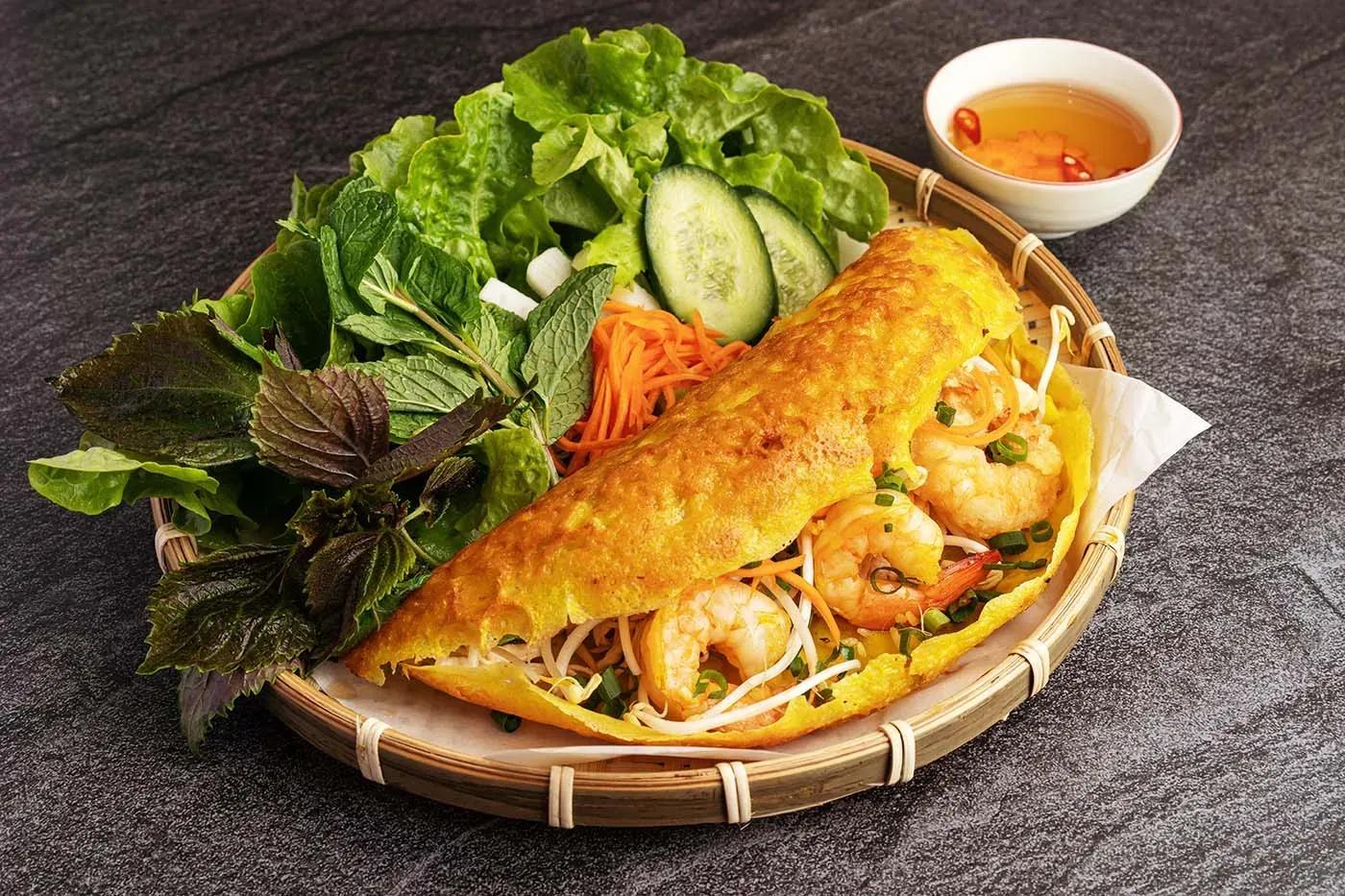
Introduce
Hanoi, the capital of Vietnam, is not only famous for its historical and cultural relics but also known as the "temple of gastronomy". Le Figaro, one of the oldest newspapers in France, praised Hanoi as a place that preserves exquisite and fresh dishes. The author of the article emphasized that the capital of Vietnam is like a giant culinary laboratory, where the best street food is "born". Below are 8 old delicacies that visitors must try when coming to Hanoi.

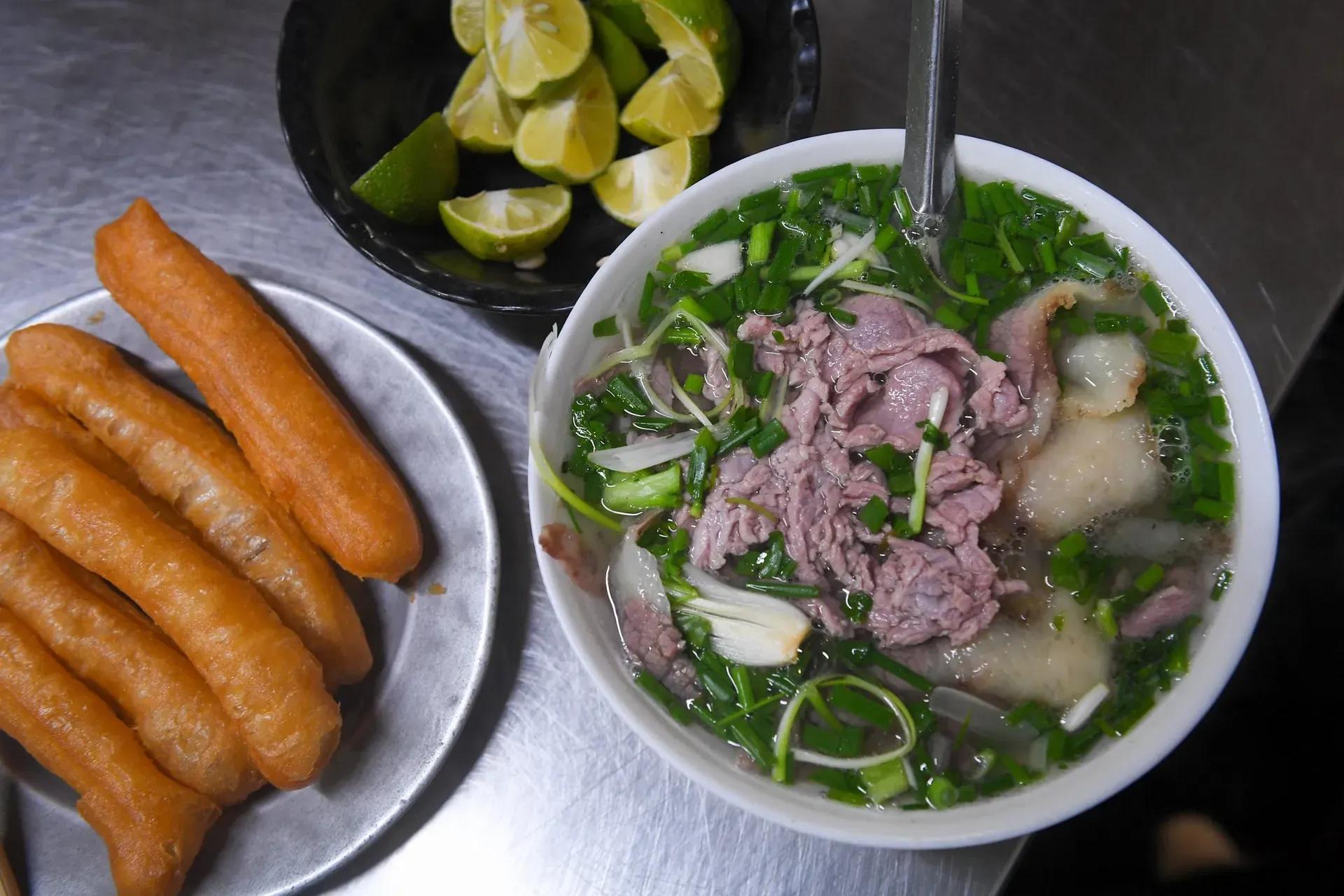

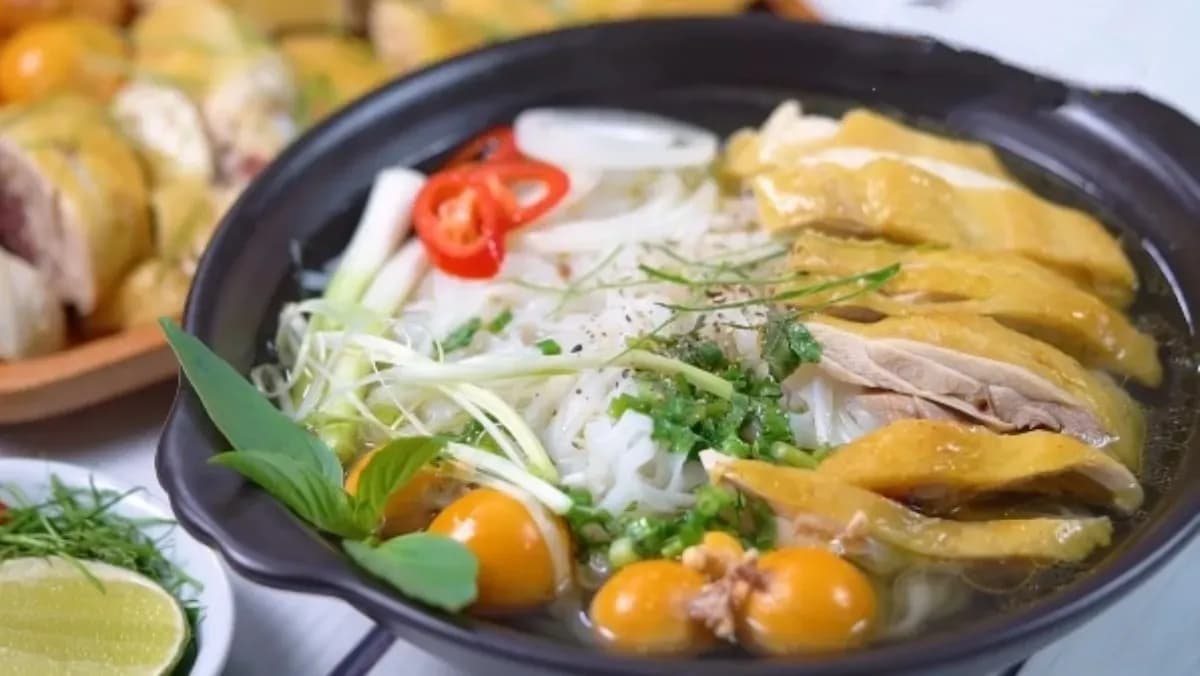
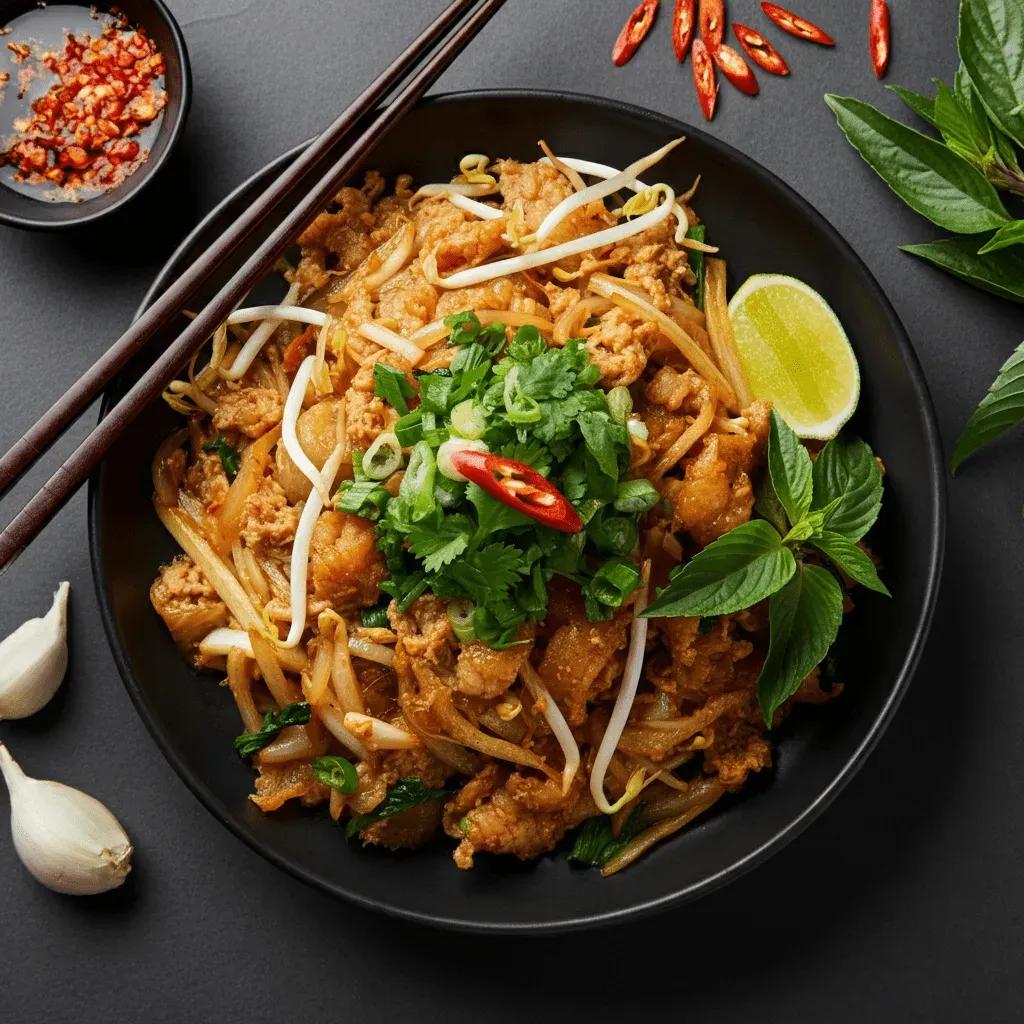

1. Pho - The quintessential flavor of Vietnamese cuisine
Pho, the iconic dish of Vietnam, is not only famous in Vietnam but also loved all over the world. Made from beef or chicken, pho has a broth simmered from bones for many hours, mixed with spices, onions and aromatic herbs. Writer Nguyen Ngoc Tien has researched many sources of information about pho, including the family history of the Nguyen Dinh family on Hang Ngang street, originally from Thanh Tri but living in Thang Long since the end of the 17th century.
Origin of Pho
According to the family history, pho originated from the dish of buffalo noodle soup, made from buffalo bone broth with noodles, accompanied by onions, Vietnamese coriander and a little buffalo meat. This dish was mainly served to porters at the ferry terminal and the Red River. Gradually, the vendors replaced the noodles with shredded rice rolls and the buffalo meat with beef, because beef was cheaper and was raised in large quantities in Ba Vi.
Another theory suggests that pho originated from the French beef soup, pot-au-feu, with the word "feu" meaning "fire". The soup was created at the De Lanessan Hospital around 1894, to nourish French soldiers who were wounded. However, this is not confirmed, as the soup often contains vegetables such as carrots and turnips, while pho is not served with these vegetables.
The third theory suggests that pho originated in the late 19th century in the village of Van Cu, Nam Dinh, where people used undried rice paper, cut into small pieces, and cooked it with bone broth and beef to sell to workers. Finally, another theory suggests that pho originated from the Cantonese dish of Niu Nhu Phan in Hanoi, with a different preparation method.
The Development of Pho
The Northern Pho recipe was born in the early 20th century and quickly became a favorite dish not only in Vietnam but also around the world. Initially, there was only one type of Pho, beef Pho, with cooked meats, thigh, flank, brisket, and later rare Pho was added. During the resistance war against the French from 1947-1954, Hanoians, with their Pho stalls, brought their Pho profession to the resistance zones, and chicken Pho was born as an alternative due to the lack of beef.
Diverse Variations
As society develops, the needs and tastes of pho eaters also change, expanding with more types of pho. Pho is now divided into two main types: pho in broth and pho in dry form. Pho in broth includes beef pho, chicken pho and pho with wine sauce, while pho in dry form includes stir-fried pho, fried pho, fried pho and pho rolls.
Pho also has variations to suit the culinary culture of each locality. For example, Lang Son sour pho uses rice noodles served with a variety of fillings such as char siu, pork liver, and herbs. Cao Bang duck pho has bone broth mixed with duck roasting water, creating a unique flavor of the northern mountainous region.
Pho across the country has been created by talented hands in unexpected ways, creating culinary quintessence. Some famous pho restaurants in Hanoi such as Pho Gia Truyen Bat Dan, Pho Thin, and Pho 10 Ly Quoc Su will definitely bring you unforgettable culinary experiences.
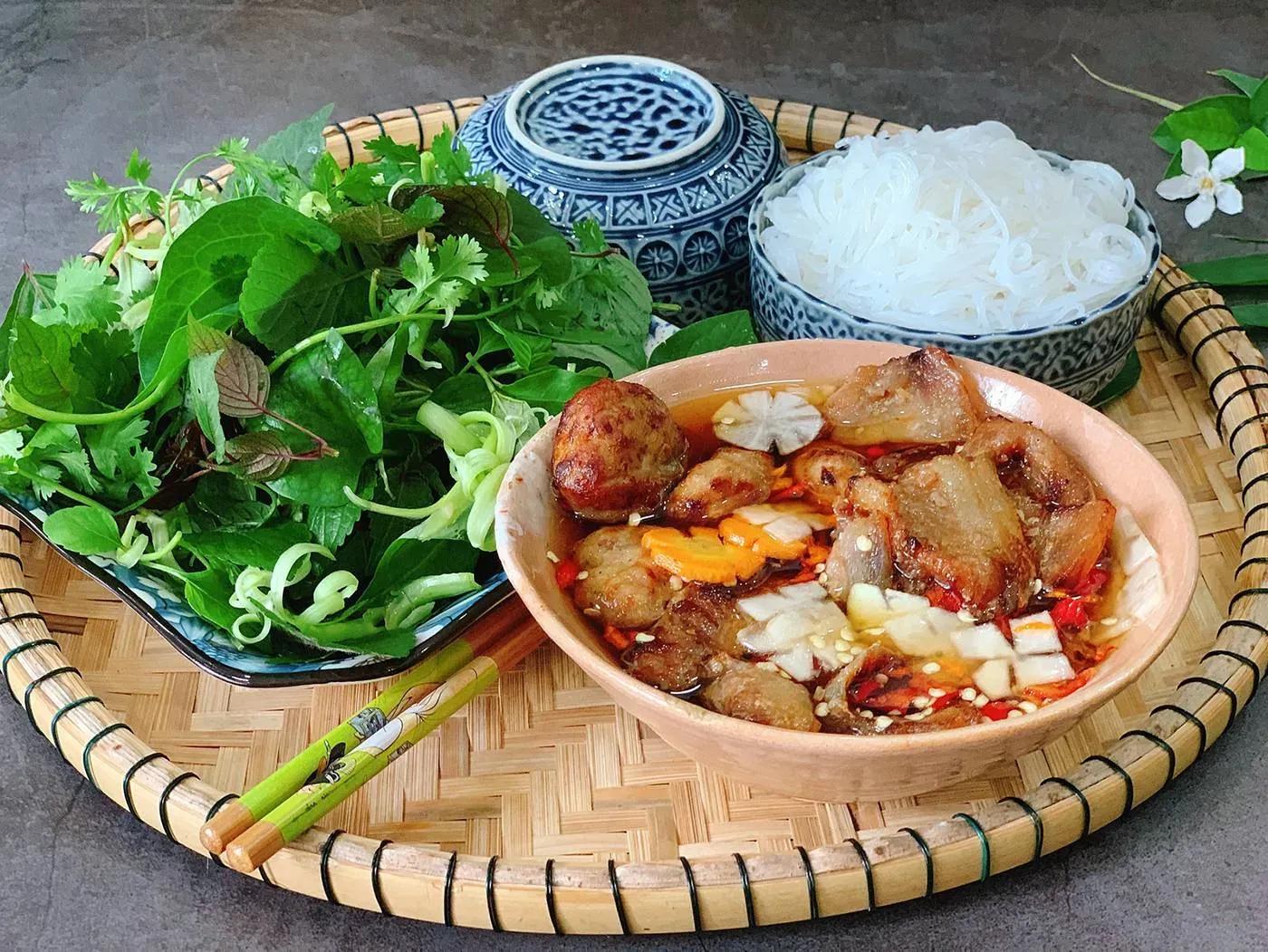

2. Bun Cha - A typical dish of the capital Hanoi
Bun cha, a typical dish of Hanoi, is not only a part of Vietnamese cuisine but also a symbol of street food culture. With the perfect combination of fragrant grilled pork, fresh noodles and raw vegetables, bun cha has conquered many domestic and foreign diners. Let's explore this dish to better understand its flavor and the story behind it.
Unique Flavor
Bun cha consists of a bowl of rich dipping sauce, grilled pork, pickled carrots and papaya, served with vermicelli noodles and raw vegetables. Although the main ingredients of bun cha are easy to find, creating a perfect meal is not simple. This dish is not only a combination of ingredients but also an art in preparation.
The Difference Of Hanoi Bun Cha
Bun cha may not be the most special dish among the countless delicacies of Vietnam, but it is its simplicity and sophistication that makes diners fall in love with it. The ingredients are easy to find, the preparation is simple, but to have a delicious bowl of bun cha, the chef needs to be meticulous in every step. The pork must be marinated with just enough spices, grilled over charcoal to retain its aroma and softness.
The Art of Grilling Meat
There are two types of meatballs in bun cha: meatballs and pieces. Meatballs are made from shoulder meat, carefully marinated and shaped into flat pieces, while pieces are usually made from pork belly marinated overnight. The harmony of spices has created the unmistakable flavor of Hanoi bun cha.
Culinary Experience
Bun cha is not just a dish, but also a cultural experience. This dish is often enjoyed at noon, when the aroma of bun cha shops spreads throughout the streets. Each bun cha shop has its own dipping sauce recipe, creating diversity and richness for this dish.
Bun Cha in Literature
Bun cha not only appears in daily life but is also mentioned in literary works. Writer Vu Ngoc Phan described the attractive aroma of bun cha in his work, while Thach Lam did not forget to describe the irresistible deliciousness of this dish. The poems and lines of literature clearly depict the appeal of bun cha in the hearts of Hanoians.
Wherever the bun cha stall is, the aroma is everywhere. The bun cha vendor fanned the bun cha over hot coals in a tin box, the bun cha sizzled and smoke billowed. For three or five cents, you could eat delicious bun cha. Homemade bun cha is more expensive and cumbersome. - Writer Vu Ngoc Phan
...There was a crazy scholar in the countryside who, one day, packed his bags and went to Hanoi and recited two lines of poetry when he smelled the smoke of grilled meat:
Thousand years of treasure of Thang Long land.
Is this bun cha?... - Writer Thach Lam
Conclude
Bun cha, with its simplicity and sophistication, has become an indispensable part of Vietnamese culinary culture. Suggested addresses for you are bun cha 74 Hang Quat (open only at noon) and bun cha Huong Lien, where former US President Barack Obama was welcomed. Come and enjoy this dish to feel the typical flavor of the capital!
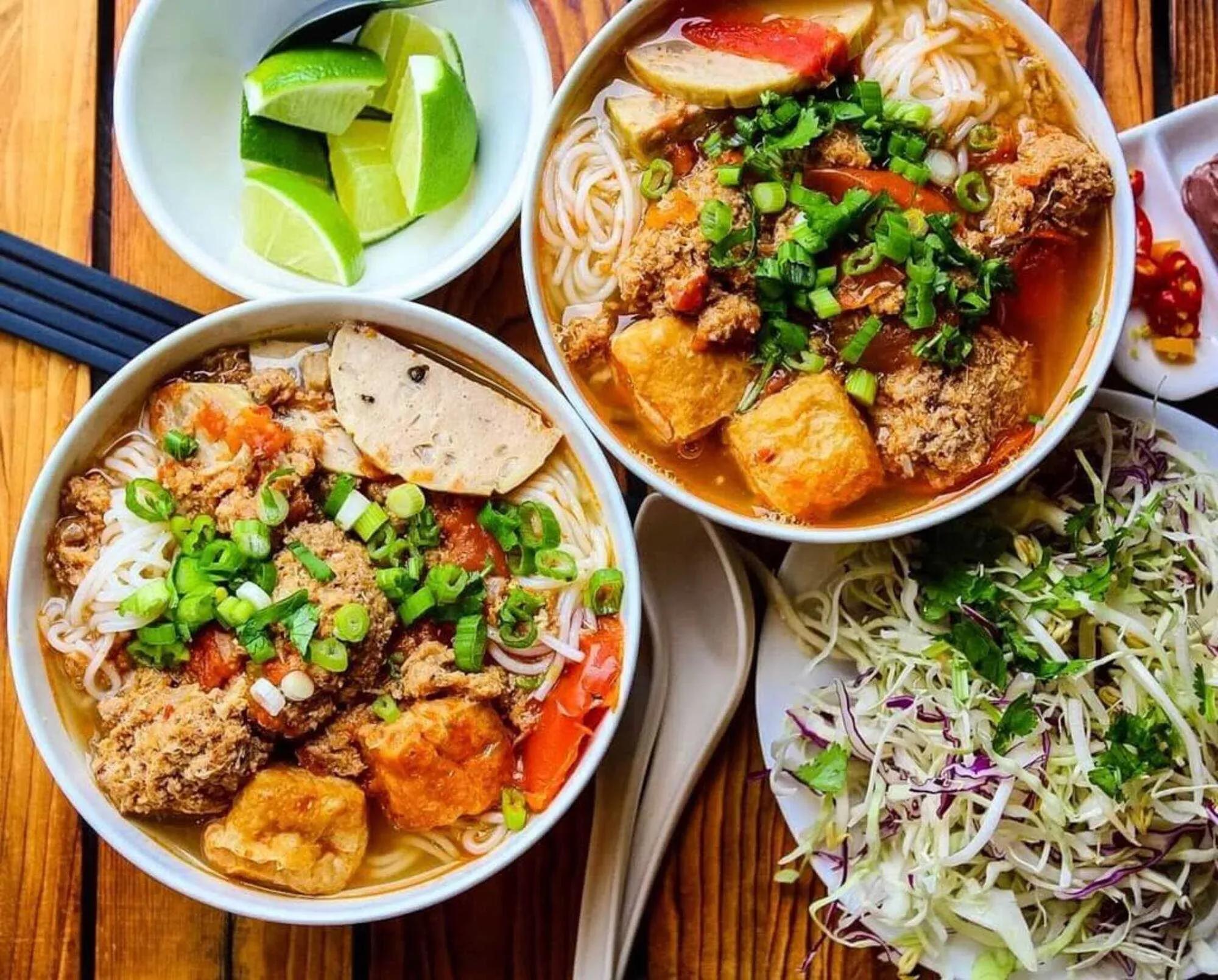
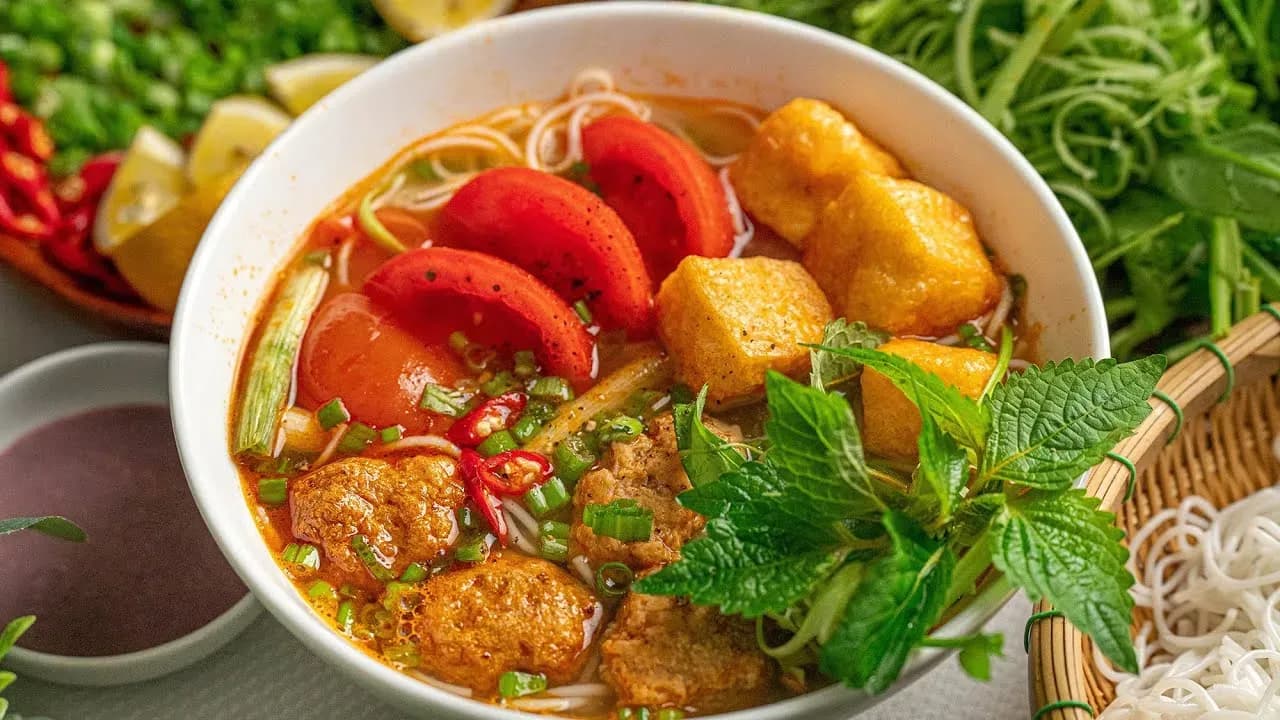
3. Crab Noodle Soup
Bun rieu cua, a traditional Vietnamese dish, is often enjoyed in the morning, bringing delicious flavors from crab roe, tomatoes, fried tofu, and can be added with pork or beef. This dish is not just a bowl of noodles but also a work of culinary art, requiring meticulousness and patience in preparation.
The Difference Between Bun Rieu Hanoi and Saigon
Although both regions use crab broth as the main ingredient, Hanoi's bun rieu is often served with rare beef, while Saigon's bun rieu has blood and pig's feet. Bun rieu originated in the North, where Hanoians have turned it into a popular breakfast dish. According to culinary artist Nguyen Thi Anh Tuyet, Hanoians are very picky about how they eat and prepare it, with the motto "each flavor needs to be clearly represented".
Fresh Ingredients
The indispensable ingredients in a bowl of vermicelli soup include thin fresh rice noodles, field crabs, tomatoes, vinegar, shrimp paste and onions. Good field crabs are those with a dull grey colour, strong legs and claws, and shiny shells. After being cleaned, the crabs are pounded and filtered to get the water, boiled until the crab meat floats, creating a rich broth.
Delicate Cooking
To get the right broth, the cook will saute chopped onions with oil or fat until fragrant, then add crab fat to make it beautiful, then pour it into the boiling soup pot, add vinegar, shrimp paste and tomatoes cut into wedges. Today, Hanoi vermicelli soup with crab is also supplemented with many other ingredients such as stir-fried beef shank, pig's ear, cartilage ribs, fried tofu, and duck eggs, creating richness for the dish.
Culinary Experience
Bun rieu is not only a delicious dish but also a cultural experience. Enjoying bun rieu at street vendors along the old quarter, diners will sit on small chairs, holding a bowl of hot noodles, eating while watching the pace of life in Hanoi. This dish easily conquers everyone's taste buds, from summer to winter. The mild sour taste of the noodles helps relieve boredom on hot summer days, while in winter, diners can slurp a bowl of bun rieu with more chili to enjoy the warm spicy taste.
Bun Rieu Saigon
Saigonese people have a more diverse way of preparing crab noodle soup, with a combination of many different ingredients. Culinary culture expert Trieu Thi Choi said that Saigonese people do not care too much about the rules of eating, but often like to change the dish to suit their taste. In the South, you can find many crab noodle soup stalls with rich ingredients, from vermicelli noodles, crab cakes, tomatoes, to tamarind juice.
Conclude
Crab noodle soup is not only a dish but also a part of Vietnamese culinary culture, showing the diversity and richness of the cuisine. To enjoy delicious crab noodle soup, you can visit the crab noodle soup restaurant at 11 Hang Bac, where the hot pot of broth is always ready to serve diners. Come and experience the unique flavor of this dish, to feel the sophistication and richness of Vietnamese cuisine!
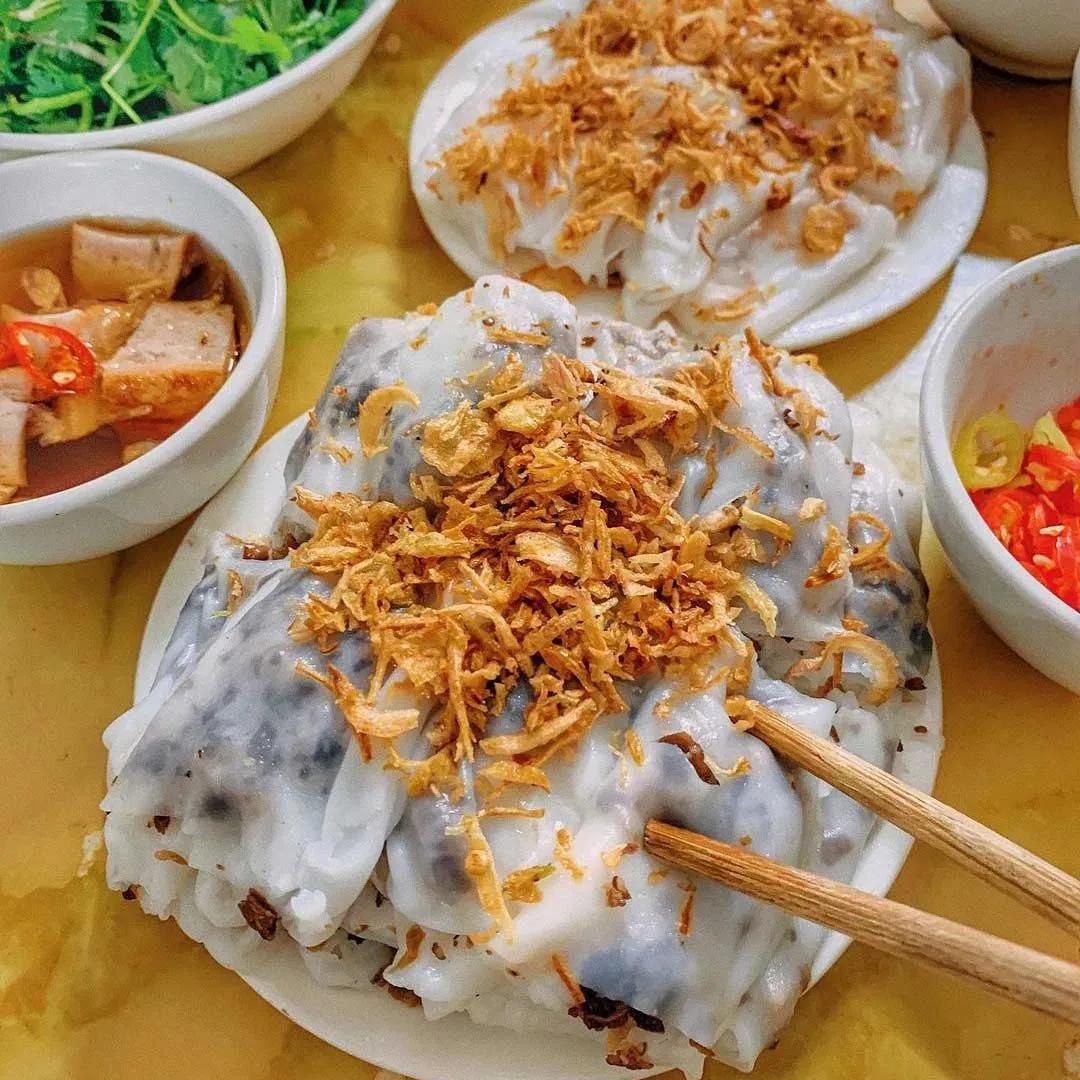
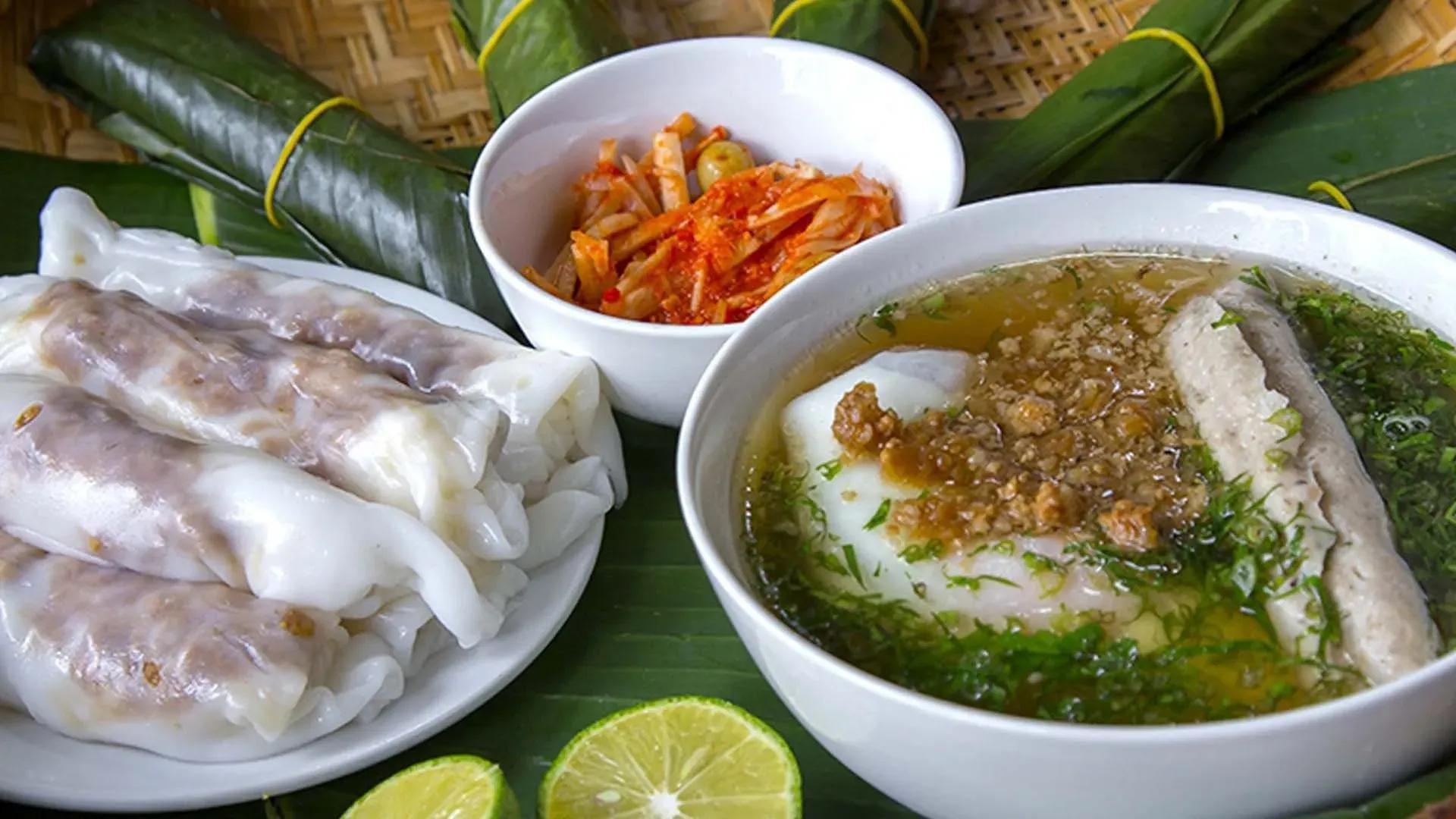
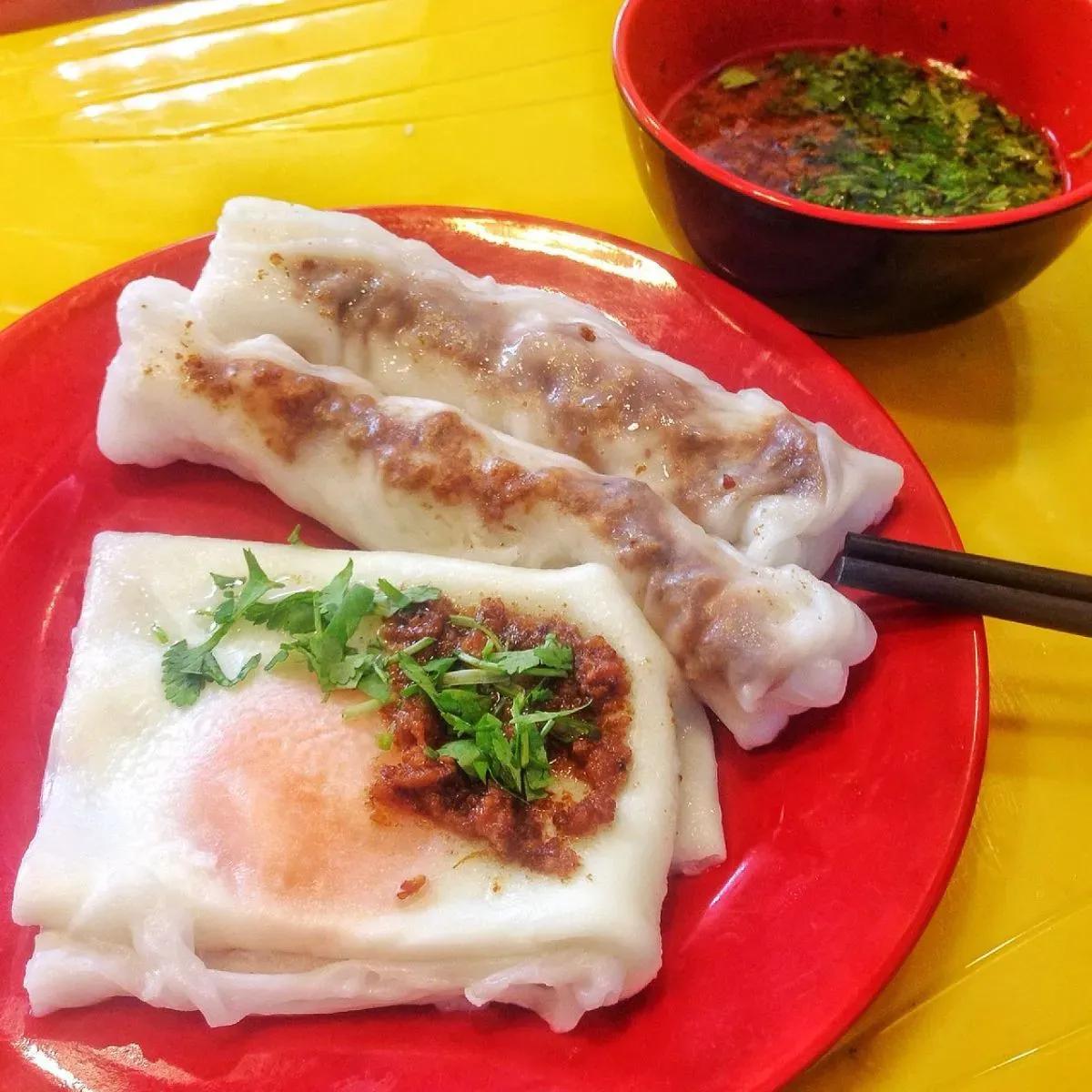
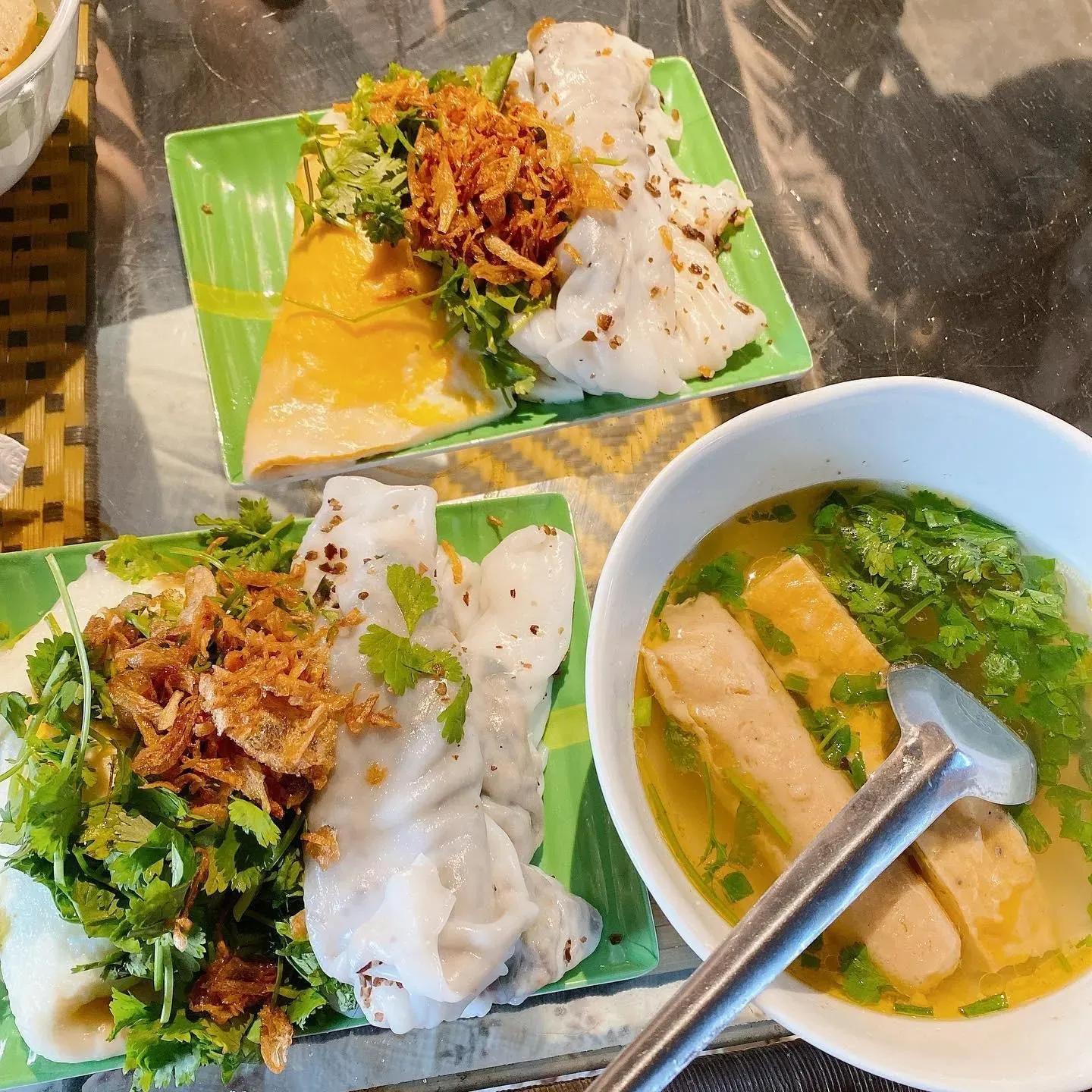
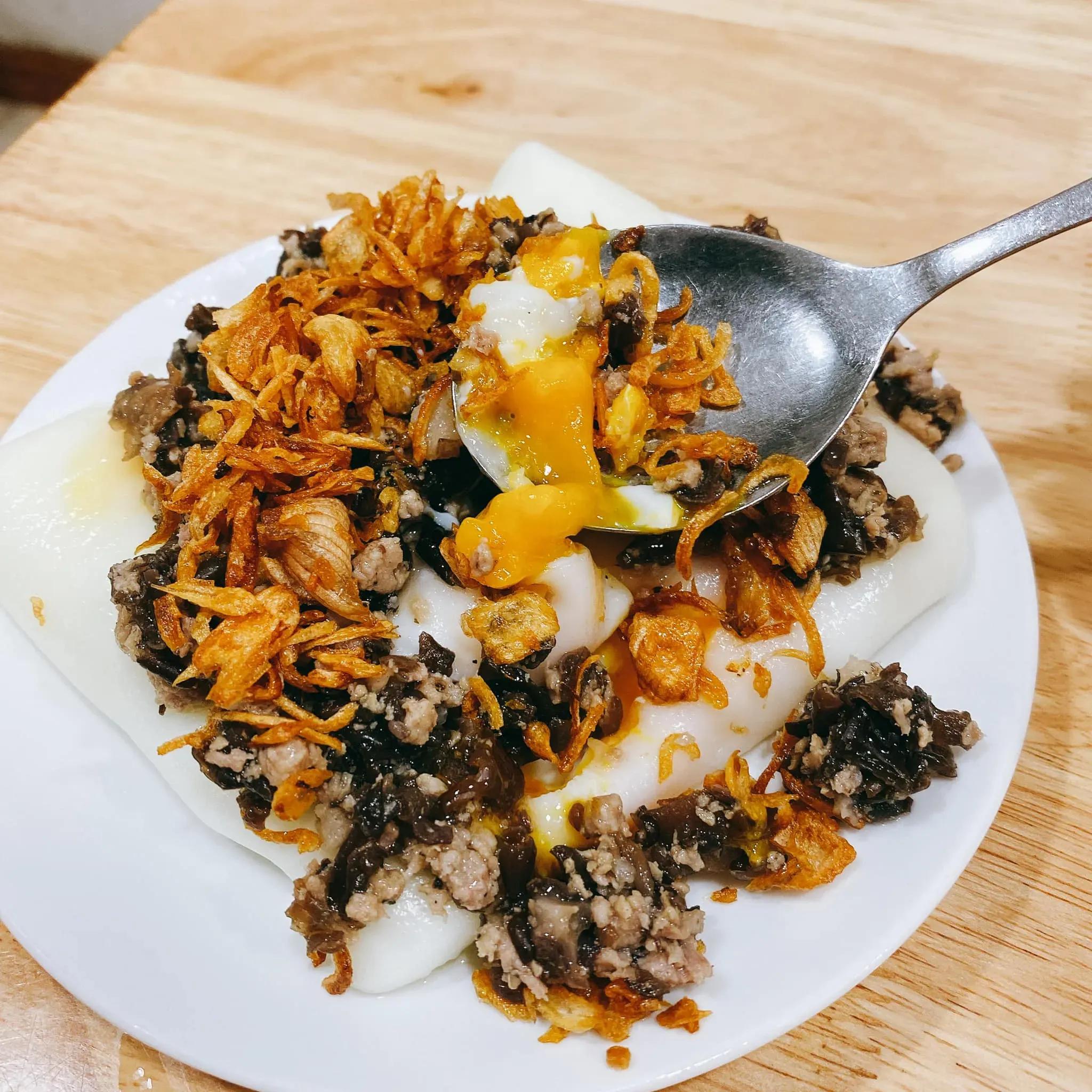
4. Banh Cuon - Variations with regional cultures
Banh cuon, a traditional Vietnamese dish, is not just a dish but also an indispensable part of the culinary culture of the people here. Made from thinly spread rice flour, rolled with pork, wood ear mushrooms and chopped onions, banh cuon is often dipped in sweet and sour fish sauce, bringing a light flavor, very suitable for hot summer days.
Regional Differences
When it comes to banh cuon, people often think of the differences between regions. Northern banh cuon stands out with its rich, delicious taste of meat, the softness of the fine flour and moderate toughness. Meanwhile, southern banh cuon brings the rich taste of eggs, along with the fragrant aroma of rice and grilled meat. Meanwhile, central banh cuon makes a difference with tightly rolled Ram, filled with minced pork, onions, vermicelli and coriander.
Traditional Hanoi rice rolls
Hanoi rice rolls are thin rice paper rolls, served with fish sauce from Thanh Tri village. Ms. Duong Thi Hanh, a rice roll seller from Thanh Tri village, said that the best part of Hanoi rice rolls is the thin, chewy crust. Currently, the popular rice rolls in shops are still thin rice rolls without filling, or with minced meat, wood ear mushrooms, each as big as 2 fingers, then cut in half or into 3 pieces. In addition, there are egg rice rolls with yolks and egg whites beaten before being spread on the rolls. The top of the rice rolls is covered with fried onions, served with cinnamon sausage, some shops have charcoal grilled sausage.
The dipping sauce for Hanoi's rice rolls is a sweet and sour fish sauce, instead of bone broth like in some northern provinces such as Cao Bang, Lang Son, Ha Giang. In Hanoi, there are many rice rolls restaurants that are chosen by many diners such as Mrs. Hanh's, Mrs. Hoanh's, Mrs. Xuan's...
Cao Bang Rice Rolls
Cao Bang rice rolls are considered a simple gift of the mountainous highlands. With the necessary sticky and fragrant taste, each piece of rice rolls is rolled into a spring roll shape, with attractive meat and wood ear toppings. Served with raw vegetables and dipping sauce, Cao Bang rice rolls bring a unique culinary experience. Normally, we often enjoy rice rolls and dip them in sweet and sour garlic fish sauce, but Cao Bang rice rolls are served with fragrant bone broth. Because of this unique feature, many people feel "strange" about this highland dish and want to know how to make Cao Bang rice rolls.
Lang Son Rice Rolls
Lang Son rice rolls are equally attractive with a fragrant layer of soft-boiled egg inside. It is still rice rolls with rice ground into flour and then spread thinly, but the difference between Lang Son egg rice rolls and other types of rice rolls is the layer of filling inside and the broth is prepared very uniquely. When eating, you will feel the sticky taste of rice rolls mixed with the rich taste of eggs, creating an unforgettable experience. The broth is simmered from marrow bones, seasoned with onions, coriander, pepper, and chili, bringing a rich flavor.
Ha Giang Rice Rolls
Ha Giang rice rolls are made from ground rice flour, with a thin crust and a filling of wood ear mushrooms, minced meat or chicken eggs with the yolks and whites folded neatly into a thicker layer of rice cake. The special thing is that the dipping sauce is simmered from pork bones for 3-4 hours, giving it a sweet taste. The way to eat rice rolls here is also very unique, usually left whole for diners to dip into the bone broth. The dipping sauce bowl has 1-2 ham sticks and chopped green onions and coriander. Diners can add chili, vinegar, or spices to make the bone broth more flavorful.
According to the locals, this way of eating rice rolls has existed for a long time and the hot, sweet broth will help warm the body in the cold weather of the highlands. You can also find rice rolls dipped in bone broth in Cao Bang, Lang Son...
Thai Nguyen Rice Rolls
Thai Nguyen rice rolls are also served with bone broth, but combined with chicken eggs and pork wrapped in betel leaves. A bowl includes 2 to 3 thin rice rolls, a chicken egg, and pork wrapped in betel leaves instead of cinnamon sausage or ham. The bone broth is thick and fatty, but still has a sweet taste, adding fried onions and a little chopped coriander leaves to create the typical flavor of this land. You can eat rice rolls for breakfast at small restaurants in Dong Hy district, Cao Ngan area or on Bac Nam street, Thai Nguyen city for only 15,000 VND per bowl.
Nam Dinh Rice Rolls
Thanh Nam rice rolls are famous for their thin, flexible and chewy rice paper making technique. The rice paper is very thin, flexible and chewy, although there is no meat filling, Thanh Nam rice rolls still attract diners. When watching Thanh Nam people making rice paper rolls, one feels like a skilled artisan. Thanh Nam people also choose rice very carefully, it must be Khang Dan rice, not too sticky, not too hard so that the flour is smooth but not broken and must be soaked and ground into a watery dough. The pot of water used to make the rice paper is always boiling at 100 degrees Celsius, so that the rice paper cooks quickly and is flexible without being broken. When taking the rice paper out, it is coated with a thin layer of scallion oil and chopped wood ear mushrooms to make it shiny and beautiful.
In the past, the cake usually did not have meat filling, but now restaurants have upgraded it to include meat and wood ear mushrooms. The cake is spread and then stacked in many layers, when eating, people peel off each layer, arrange it on a plate, eat it with herbs and coriander, fragrant fried onions, add cinnamon sausage, and dip a toothpick in water bug oil, it is really delicious. When eating, the cake is stacked on top of each other, accompanied by pork roll, sour sausage and fragrant fried onions.
Whether enjoying banh cuon with or without meat filling, Thanh Nam banh cuon still attracts diners with the sophistication in each piece of cake.
Hung Yen Rice Rolls
Hung Yen rice rolls are made of thin skin and stacked on top of each other. When a customer orders, the owner will scoop the filling of minced meat and fried onions into the middle of the rice paper and roll it up, creating an attractive dish. Hung Yen rice rolls are served with a dipping sauce mixed with a little filling and a few slices of red chili.
Ha Nam Rice Rolls
Ha Nam rice rolls are eaten cold with grilled meat and hot fish sauce with a full range of sweet, sour, salty and spicy flavors, along with some other herbs. After being rolled, the rice rolls are stacked on top of each other. The accompanying sausage is made from pork belly so that it is not too dry or greasy when grilled. After being cut into bite-sized pieces, the meat is marinated with fish sauce, shallots, pepper, sugar and white sesame seeds, then grilled over charcoal until the outside of the meat is golden brown and can be served to diners.
Quang Ninh Rice Rolls
Quang Ninh rice rolls have the same rice paper and dipping sauce as Hanoi rice rolls, but the side dish is replaced with squid sausage - a famous local specialty. Some places make rice rolls with shrimp filling and serve with shrimp floss. Coming to Ha Long, visitors can enjoy this dish at some places such as Mrs. Ngan's restaurant, Mrs. Yen's restaurant, and Goc Bang restaurant.
Thanh Hoa Rice Rolls
Thanh Hoa rice rolls impress diners with their shrimp and minced meat filling. The rolls are often served with spicy and sour fish sauce. In addition, rice rolls are also made without filling to eat with eel porridge.
Nghe An Rice Cake
At first glance, Banh Muot Nghe An looks like Banh Cuon of the North, Banh Uot of the South, but there are many ways to eat it. The most popular way is to dip the cake in fish sauce with lemon juice, while more luxuriously, Banh Muot is served with sausage; duck, beef, chicken or stir-fried offal (pork offal such as heart, liver, intestines, kidneys, stomach and blood sausage). The photo above is a version of eel soup eaten with Banh Muot popular in Vinh.
Ha Tinh Rice Cake
Ha Tinh wet rice cake Attractive thanks to the combination of soft, thin, fragrant rice noodles and crispy, hot, fatty spring rolls, dipped in fish sauce mixed with boiling water, sugar, and MSG. The spring rolls are tightly rolled, with minced pork, onions, vermicelli, and coriander filling inside. The spring roll skin is thicker than regular rice paper and is golden brown, made from rice and molasses. The spring rolls are chewy, fragrant, and smooth, made from sticky rice flour that has been fermented overnight. Diners can choose to roll them with pork roll or sliced pork roll (a combination of ground pork and fatty meat) and sprinkle some fried onions to enhance the flavor.
Sweet Rice Noodles - Sweet Rice Rolls from the West
Sweet rice rolls or sweet wet rice rolls are a specialty of the West. The rice paper is made from rice flour, coconut milk and natural colorings such as pandan leaves, purple leaves, beetroot... The rice paper is also steamed like other rice paper rolls, but the filling includes green beans, coconut or sweet taro. After rolling, the rice paper is covered with a layer of roasted sesame to add a rich, fatty flavor.
Southern Rice Rolls (Saigon Rice Rolls)
Banh cuon in the South is remembered for its fragrant and fatty taste of eggs, and the rich, fragrant and sweet taste of rice or grilled meat filling.. Saigon rice rolls are considered to have originated from the North, but have been modified to suit the taste of the South. The biggest difference is that the dipping sauce is sweeter. In addition, the fillings served with Saigon rice rolls often include blanched bean sprouts, chopped lettuce, spring rolls, shrimp cakes or spring rolls.
Conclude
Banh cuon is not only a simple dish but also a part of the rich culinary culture of Vietnam. Each region brings unique variations, creating diversity and appeal for this dish. Come and enjoy banh cuon at famous restaurants in Hanoi such as Banh Cuon Ba Hanh, Banh Cuon Ba Xuan to feel the unique flavor of this traditional dish!

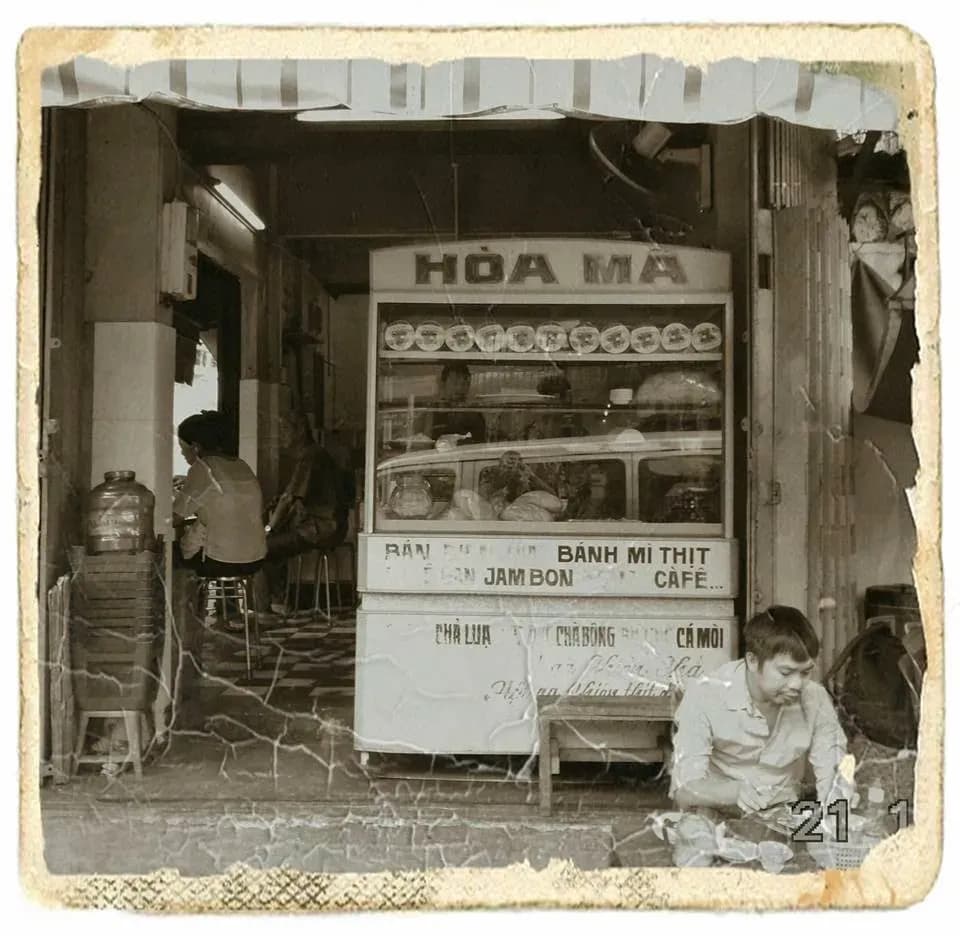
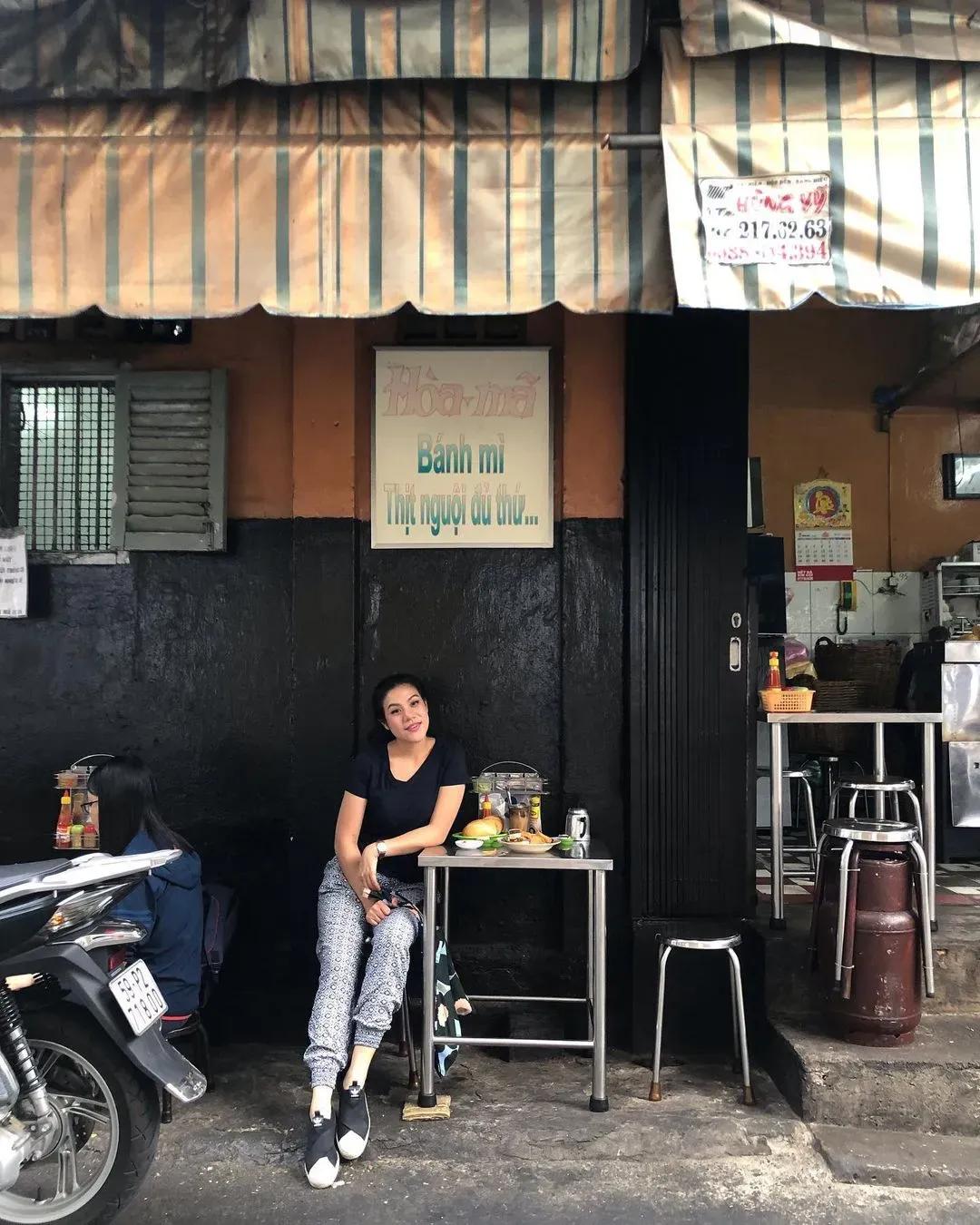
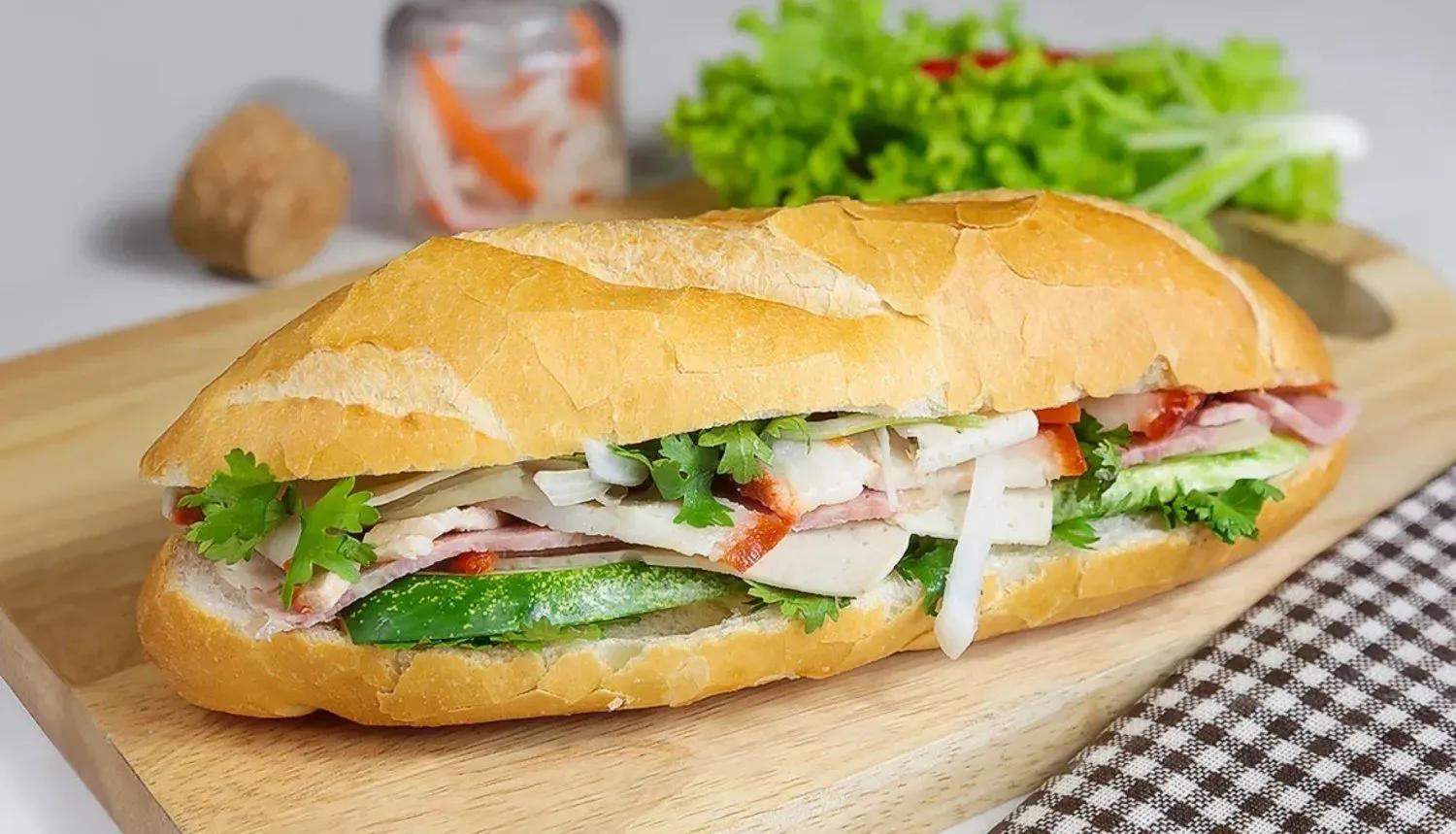
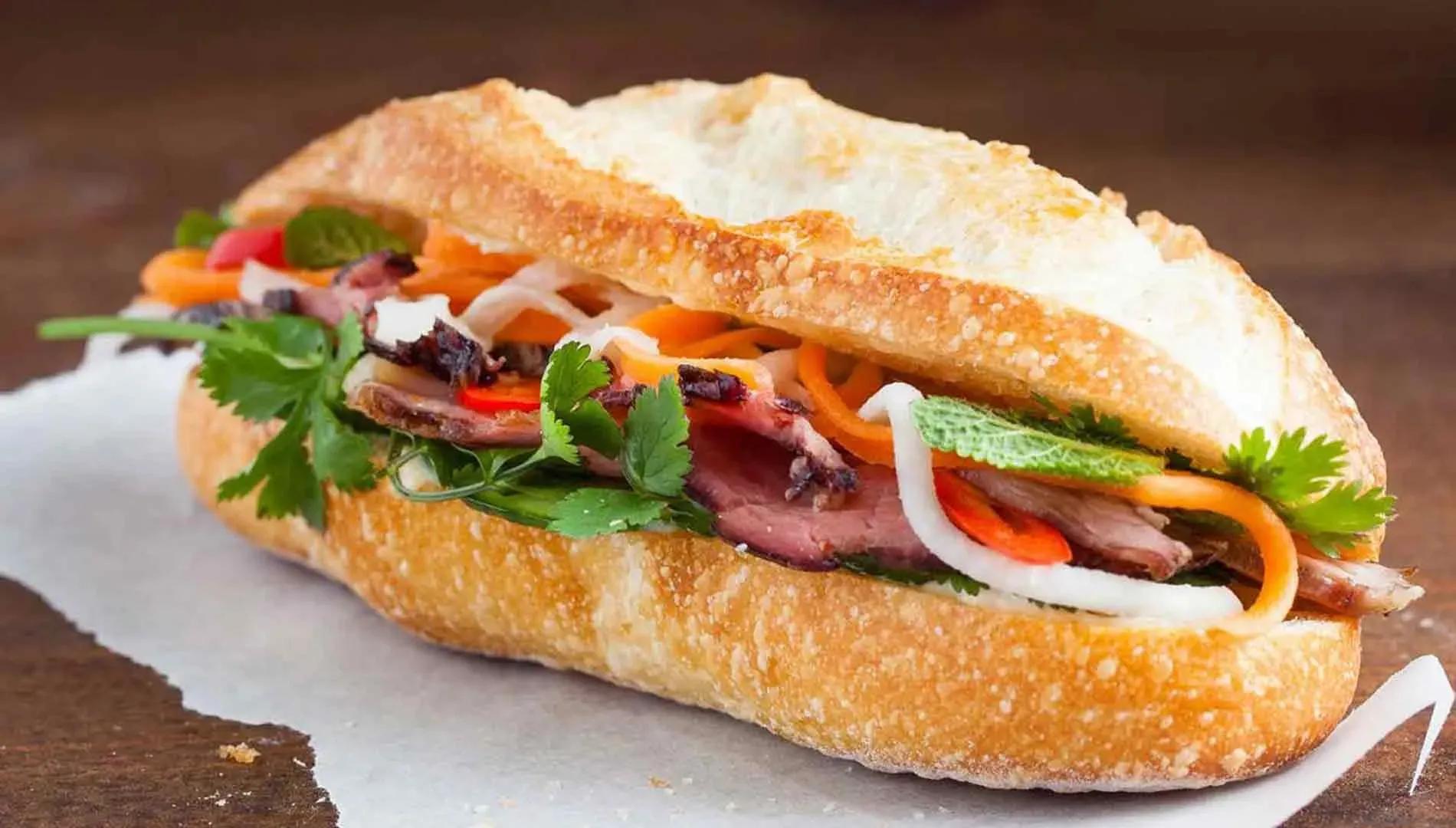

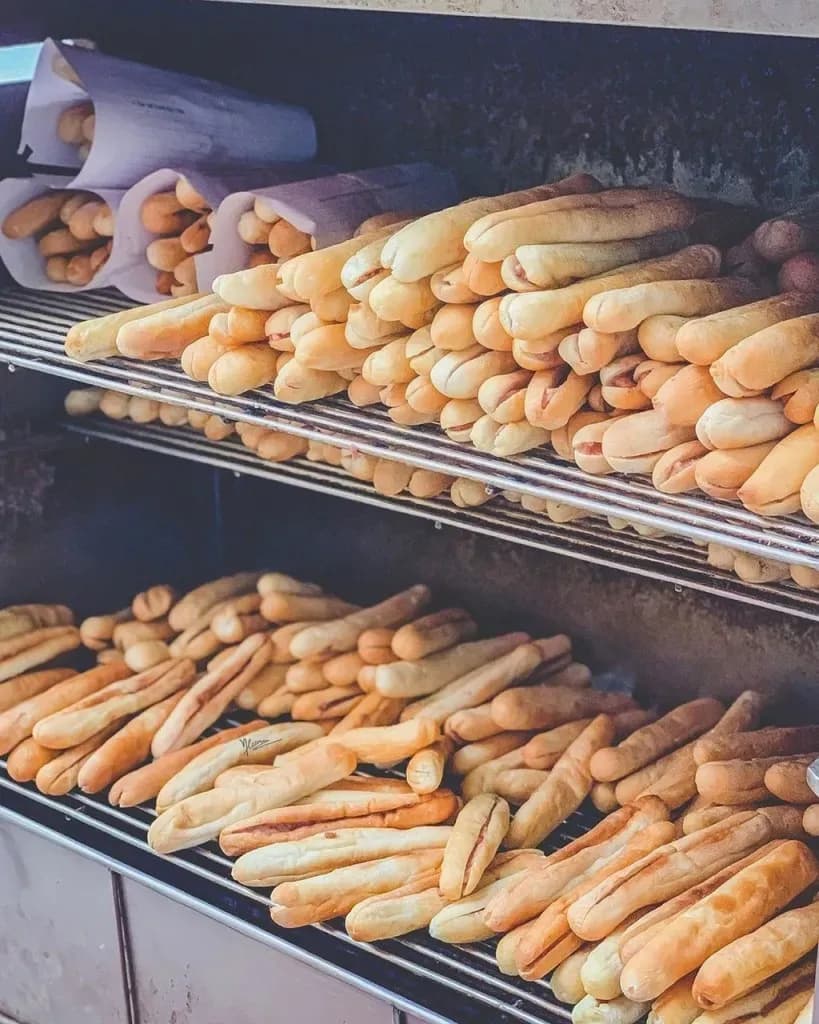
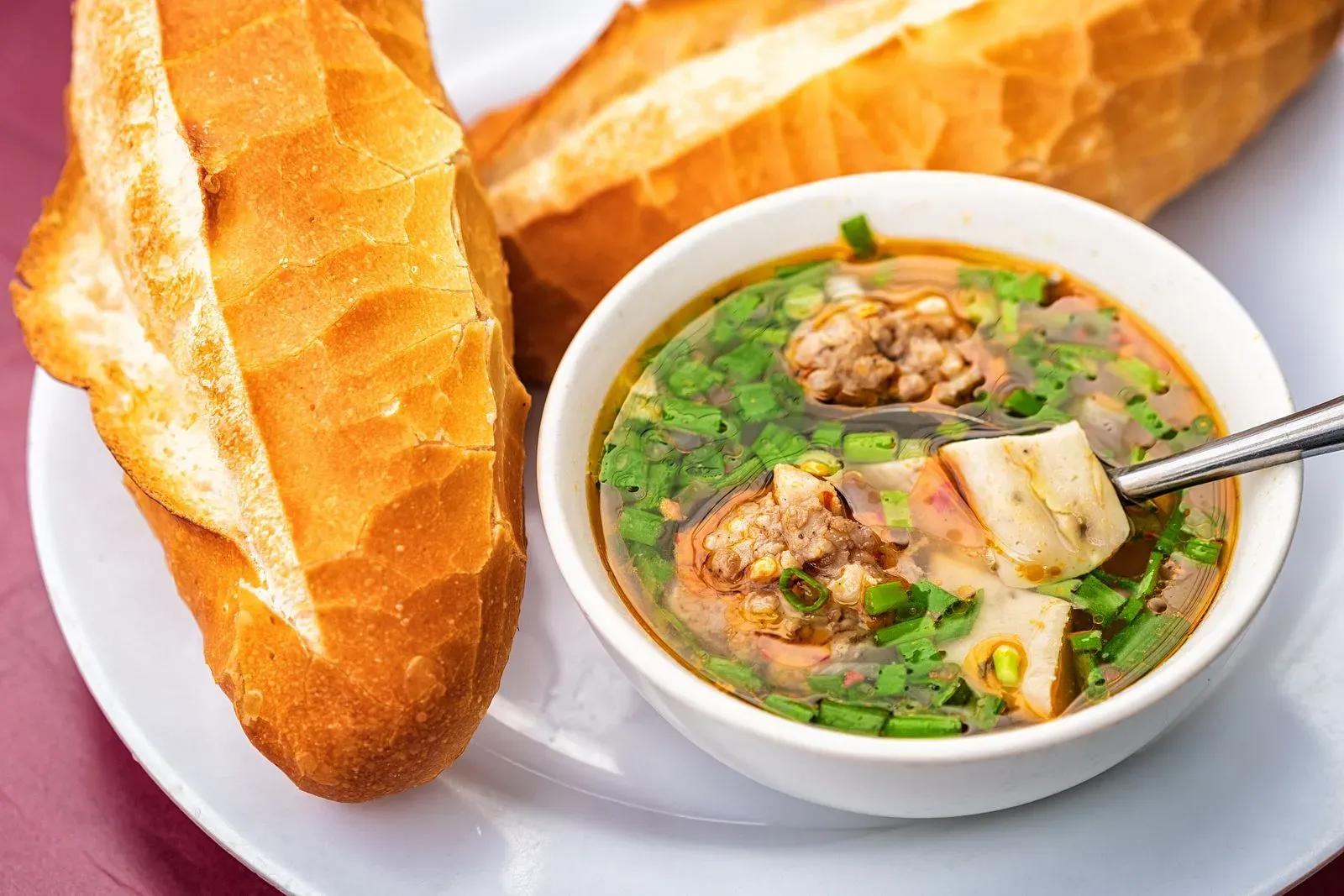

5. Bread
Banh mi, an iconic Vietnamese dish, is a perfect combination of French cuisine and traditional Vietnamese flavors. In Hanoi, you can easily find delicious banh mi stalls everywhere. A banh mi usually consists of crispy bread, pickled vegetables, coriander, pate, eggs or meats. The journey of banh mi from “upscale” food to street food has amazed the world.
Special Journey
Banh mi originated in the West, but the constant creativity of the Vietnamese people has turned it into a unique dish, leaving a strong mark on the global culinary map.
In the early 19th century, the French brought the baguette to Gia Dinh (Saigon) to serve the upper class. They built the first bakeries in Vietnam, quickly making this bread popular. The people of Saigon skillfully processed the baguette into a typical Vietnamese bread with a length of only about 30-40 cm, retaining the crispiness and spongy inside.
On March 24, Google honored banh mi with an animated image on its homepage in more than 10 countries, including Vietnam. This is the first time a Vietnamese dish has been honored through Google Doodle.
On March 23, 2011, the word “banh mi” was officially added to the Oxford dictionary, affirming its position as a proper noun, not simply “Vietnamese baguette” or “Vietnamese sandwich”.
The Variety of Bread
Banh mi has become a “national” fast food for everyone, thanks to its diversity and convenience. You can enjoy banh mi anywhere, from sidewalk stalls to luxury restaurants. Each region has its own variations, from Hai Phong baguettes to Hoi An sandwiches with a variety of fillings.
Hoa Ma Bread
The Vietnamese sandwich really took shape when Mr. Hoa and Mrs. Tinh opened Hoa Ma shop in 1958. With experience from working for a cold meat company supplying French restaurants, they opened a shop selling sandwiches and cold meats to serve the locals. Initially, the sandwiches were served Western style, but later, they innovated the way of putting meat and pork sausage in the middle of the bread, making it easy for diners to take away.
Saigon Bread
Saigon banh mi stands out for its richness in ingredients and preparation methods. You can find fried egg banh mi, meatball banh mi, roasted pork banh mi, and many other varieties. The typical flavor of Saigon banh mi is openness and creativity, with sweet dipping sauces and fresh vegetables.
Hai Phong Bread
In Hai Phong, baguettes, as the name of this special type of bread suggests, are served in small sizes, about 10 - 12 cm long and 3 - 4 cm in diameter. Baguettes are often served with pate, chili, and herbs, creating a unique culinary experience, often bringing a crispy, delicious feeling.
Dalat Bread
In Da Lat, banh mi xiu mai is served with a thick sauce, creating a unique culinary experience. The bread here is usually thicker, giving a feeling of fullness and deliciousness.
Conclude
Banh mi is not only a simple dish but also a part of the rich culinary culture of Vietnam. With constant creativity, banh mi has become a symbol of Vietnamese street food, loved not only domestically but also worldwide. Come and enjoy banh mi at famous shops, to feel the unique flavor and sophistication of this dish!
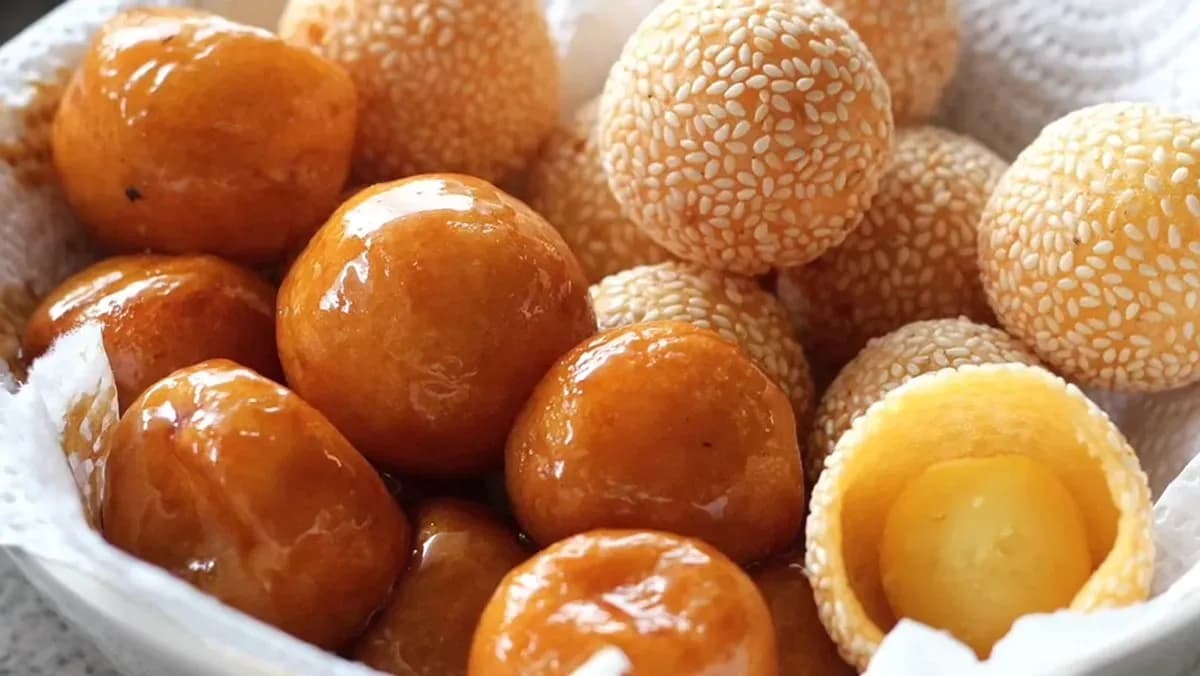
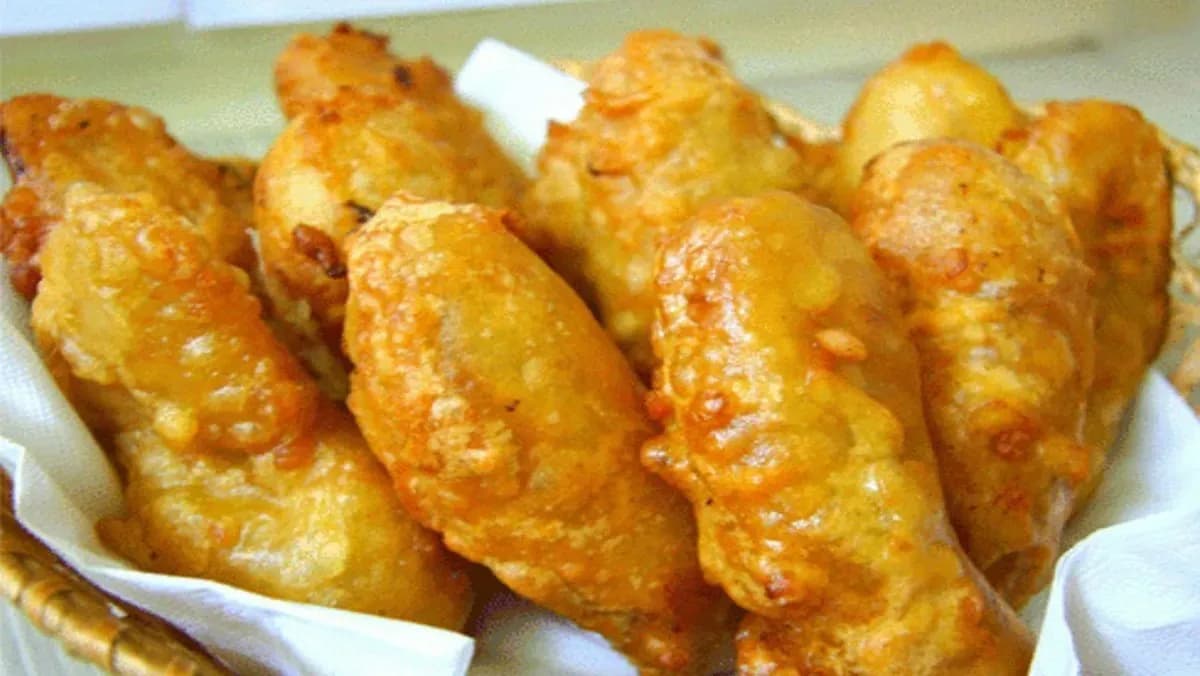
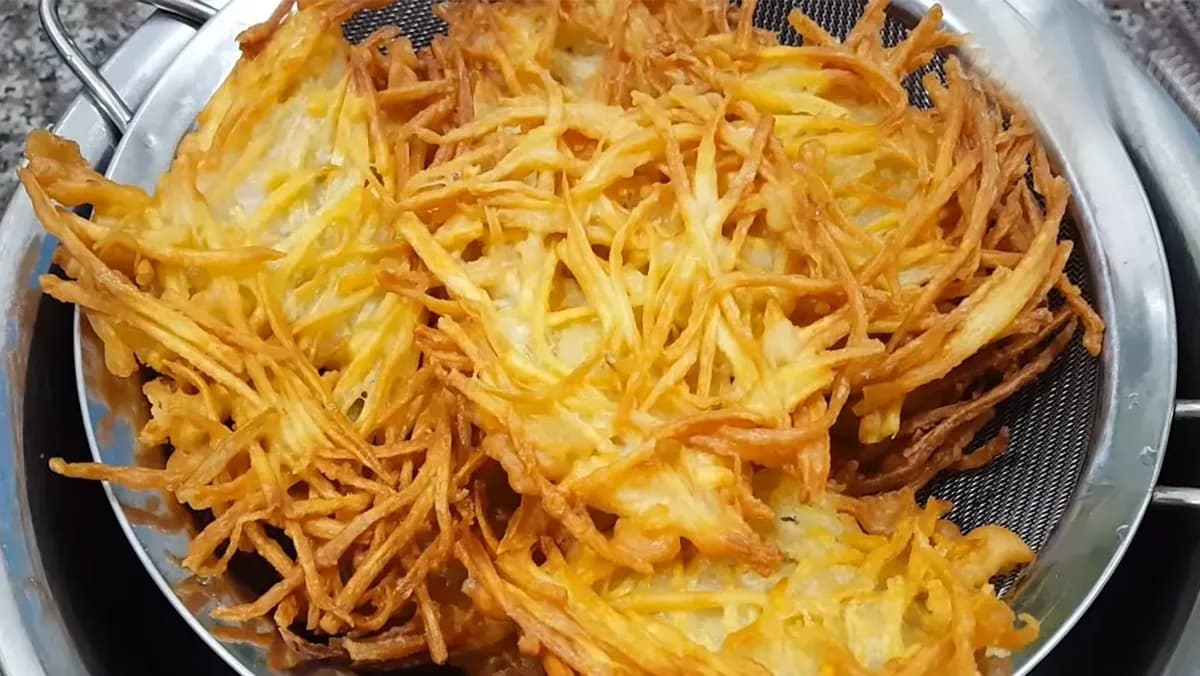
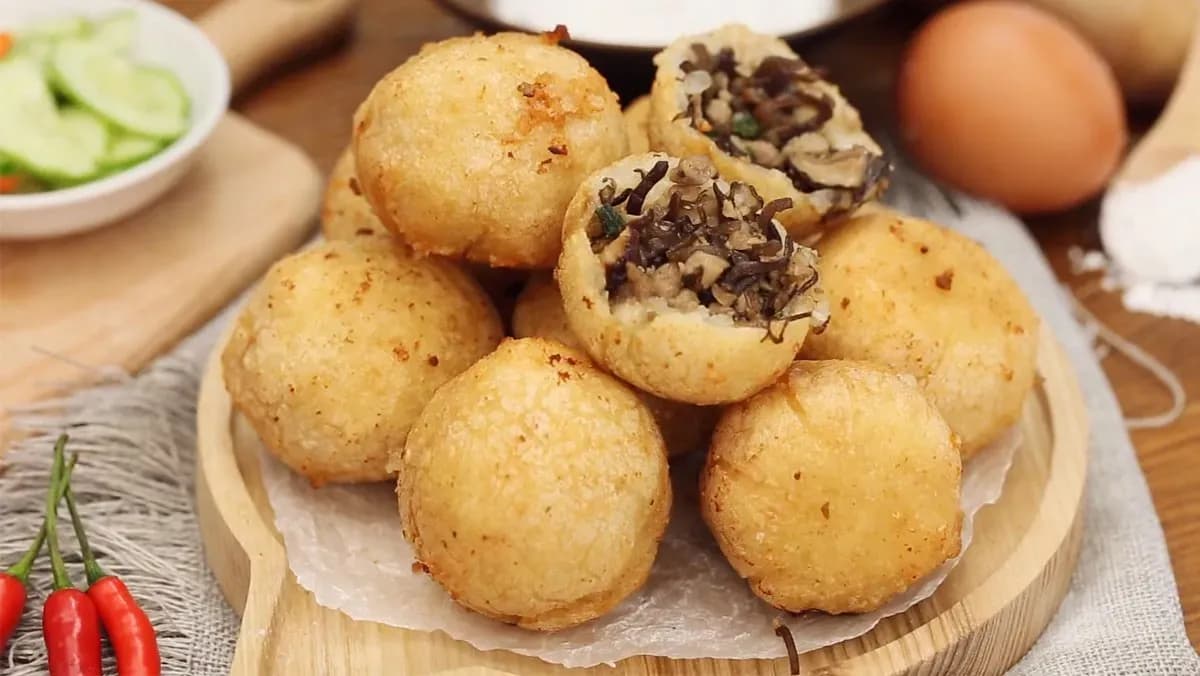

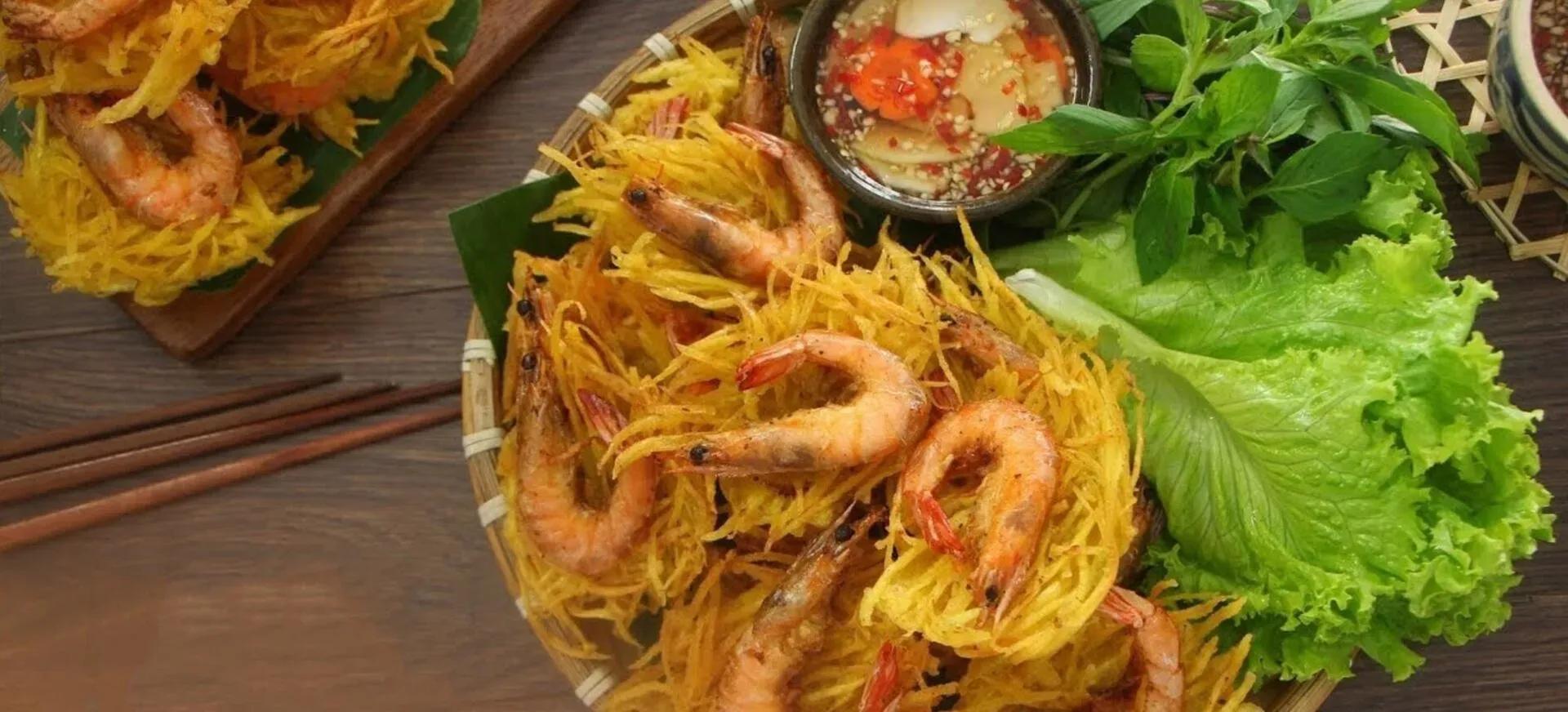
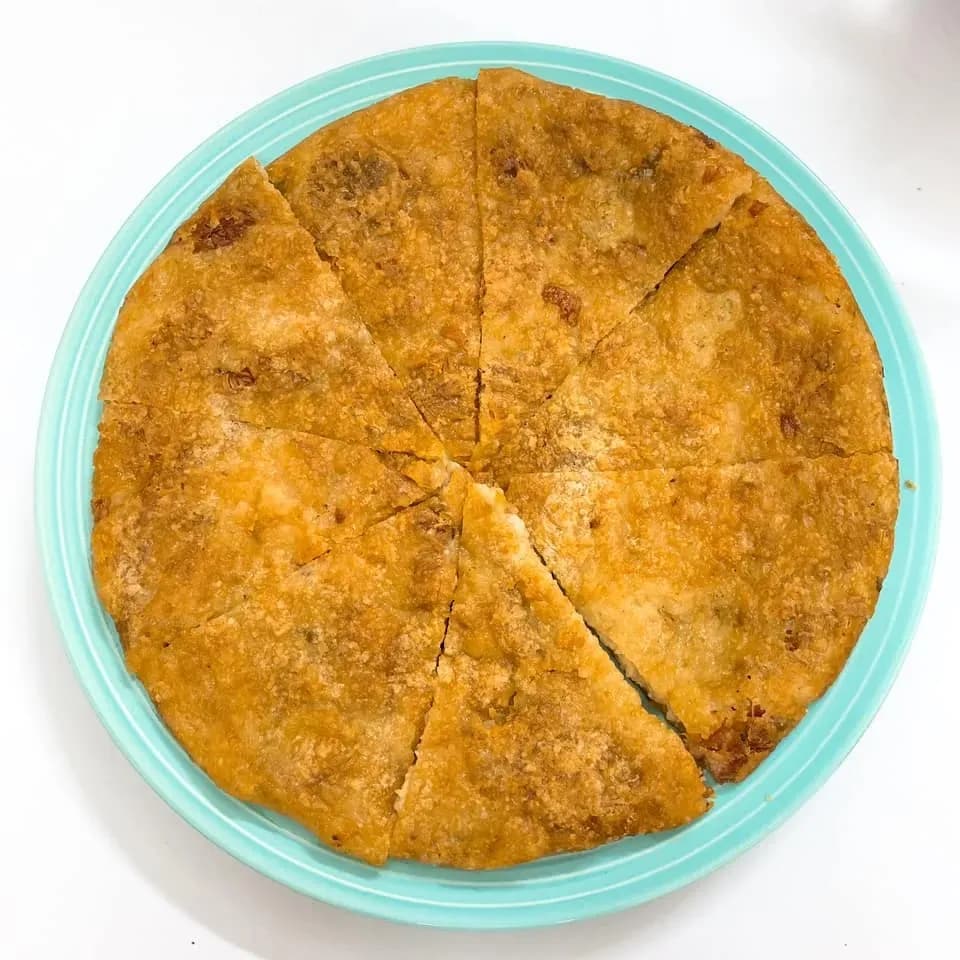
6. Types of Donuts and Cakes
Hanoi is not only famous for its traditional dishes but also for its treasure trove of fried cakes such as banh goi, banh tom and many others. The fatty, crispy fried cakes are often served with garlic, chili and herbs, creating an irresistible flavor. Especially when the cold winds blow, Hanoians look for these familiar gifts to enjoy in the chilly weather.
Molasses/Sugar Donuts
Honey fried cakes are an indispensable dish in winter. With a shiny brown outer shell thanks to the layer of cooked sugar, the fried cakes are filled with pureed mung beans and shredded coconut, creating an unforgettable sweet flavor. When shaking the cake, you will feel the "shaking" of the filling inside, making the experience of enjoying this cake more interesting. To find hot cakes, you can visit Hang Chieu, Luong Ngoc Quyen or Thai Thinh streets.
Banana Cake and Potato Cake
As the weather cools, banana, potato, and corn cake vendors start popping up all over the streets. Banana fritters are made from flattened bananas, coated in flour, and deep-fried until crispy. Potato fritters are made from thinly sliced sweet potatoes, dipped in flour, and fried. These cakes are not only appealing for their eye-catching golden color, but also for their perfect combination of the sweetness of the potatoes and bananas and the crunchy aroma of the flour.
Savory Donuts
Savory fried cakes with meat filling are a different version of sweet fried cakes. The filling includes meat, vermicelli, and wood ear mushrooms that have been stir-fried until fragrant, then shaped into balls and fried in hot oil. This dish is often dipped in sweet and sour fish sauce, accompanied by papaya, pickles, and raw vegetables. Famous savory fried cake shops are often located on streets such as Ly Quoc Su, Phuong Mai, and Hang Chieu.
Banh Xeo
Although not originally from the North, banh xeo has quickly won the hearts of Hanoi diners. The banh xeo here has a thin, crispy crust, filled with shrimp, fatty pork and fresh bean sprouts. Diners often cut the cake into small pieces and roll it with rice paper, raw vegetables, green banana and pineapple, creating an attractive dish.
Shrimp Cake
West Lake shrimp cakes are one of the famous dishes in Hanoi cuisine. With small shrimp fried crispy on top of a thick layer of flour, shrimp cakes are often served with sweet and sour fish sauce, raw vegetables and pickles. The shrimp cakes are as big as a hand, cut in half for easy enjoyment. You can find this dish at restaurants on Thanh Nien Street, Hang Bo Street and at Dong Xuan Market.
Fried Banh Chung
Banh chung, a traditional dish associated with the Lunar New Year, is also popular in winter. The palm-sized banh chung are sold in markets across the city. Filled with green beans and fatty pork, the fried banh chung is appealing with its crispy outer shell and soft, fragrant filling. Paired with pickles, chili sauce and sausages, this dish will bring a feeling of warmth in the cold of the monsoon.
Conclude
Donuts are not only delicious but also a part of Hanoi's rich culinary culture. Come and enjoy these special donuts to feel the unique flavor and sophistication of Vietnamese cuisine!
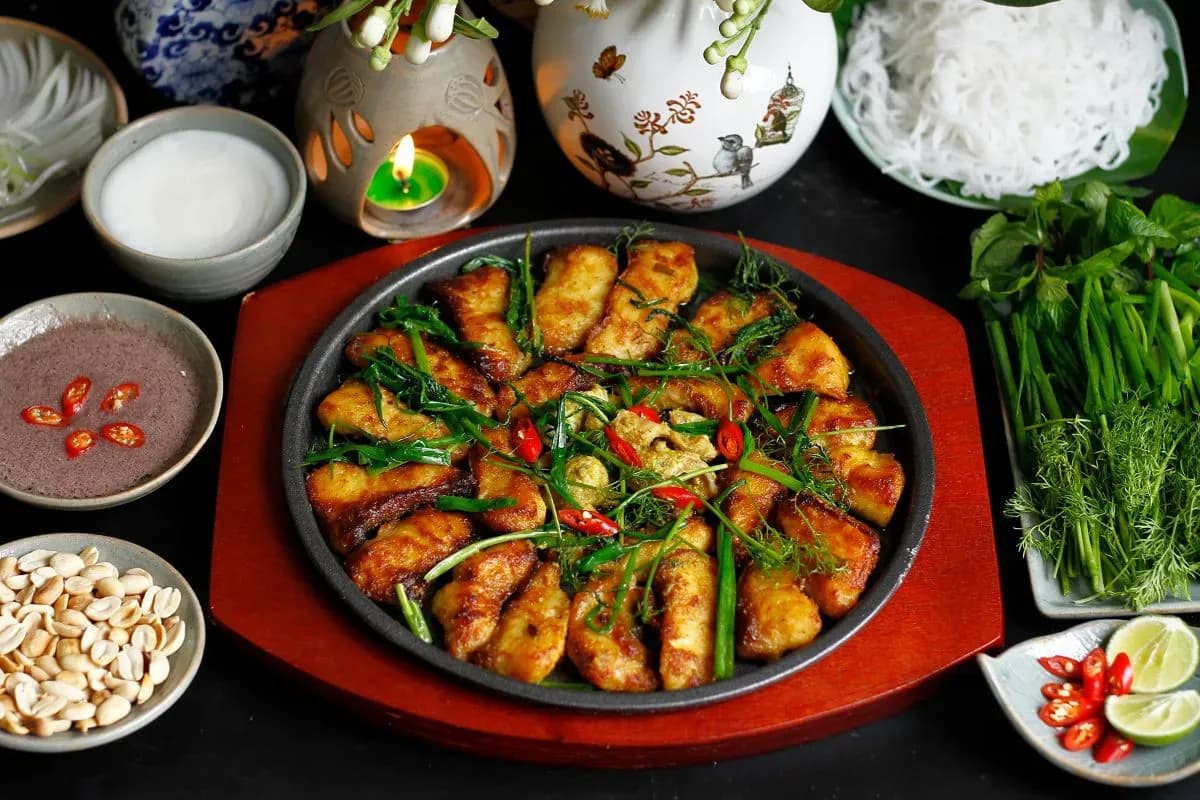
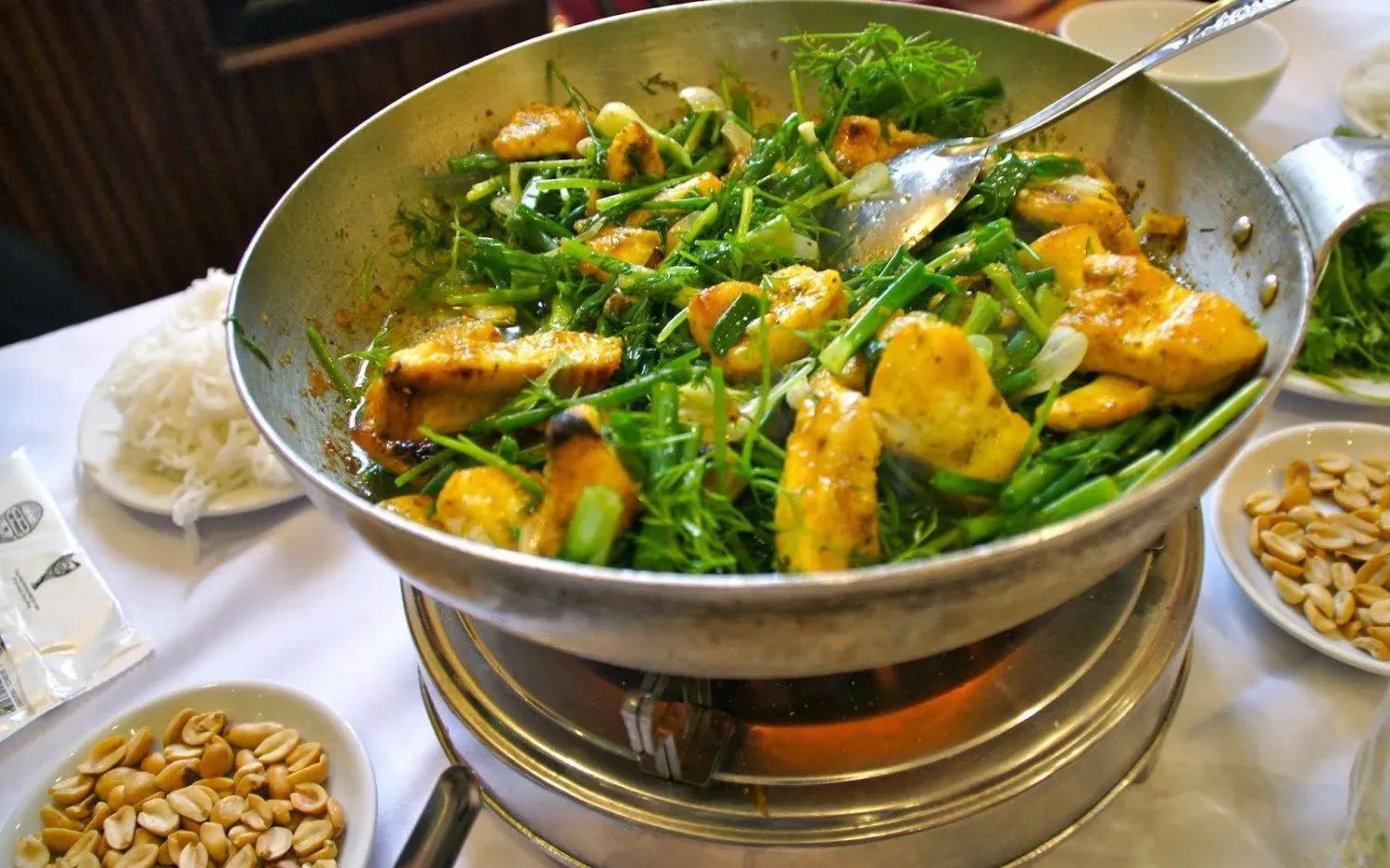
7. La Vong Fish Cake
La Vong fish cake is one of the indispensable dishes when you set foot in Hanoi. Made from fish fillets marinated with turmeric and spices, the fish cake is grilled over charcoal and served hot in a cast iron pan. This dish is usually served with vermicelli noodles, coriander, onions, chives and roasted peanuts, along with a special shrimp paste dipping sauce. La Vong fish cake is not just a dish, but also a symbol of Hanoi cuisine, carrying within it the perfect blend of typical Vietnamese spices.
Historical Journey
La Vong fish cake originated from the Doan family at 14 Cha Ca street (formerly Hang Son street). During the French colonial period, the family often used their house as a shelter for the De Tham army. The owner often made a very delicious fish cake dish to treat guests, and over time, it became a habit, and those guests helped the family open a restaurant specializing in selling that dish, both to support the family and to serve as a gathering place.
Cha ca is made from fresh fish pieces, marinated and grilled over hot coals, and has quickly become a favorite dish of Hanoians. Cha ca is not just a dish, but also a part of Hanoi's culinary culture. In 2003, this dish was included in the list of world-famous dishes when mentioned in articles by international culinary experts.
Delicate Cooking
To have a delicious bowl of fish cake, the ingredients must be carefully selected. The fish is usually fresh catfish, with sweet meat and few bones. The fish is filtered, sliced, marinated with galangal juice, turmeric, rice vinegar, pepper and fish sauce according to a secret recipe. After marinating for at least 2 hours, the fish will be grilled over charcoal until golden brown and fragrant.
Enjoy Fish Cake
Fish cakes are usually enjoyed in two popular ways. The first way is to put the grilled fish in a pan of oil, add onions and dill. When the vegetables are half-cooked, you can take them out and eat them with vermicelli, herbs, roasted peanuts and prepared shrimp paste. The second way is to put the fish cakes, onions and vegetables in a bowl, pour the boiling oil and serve immediately, you can eat them with grilled rice paper.
Conclude
Cha ca is not only a popular dish but also the pride of Hanoians. With its sophisticated preparation and unique flavor, cha ca has become an indispensable part of Vietnamese culinary culture. Come and enjoy cha ca at Cha Ca Thang Long restaurant on Duong Thanh street, where the Doan family has a 5-generation tradition, to experience the wonderful taste of this dish!

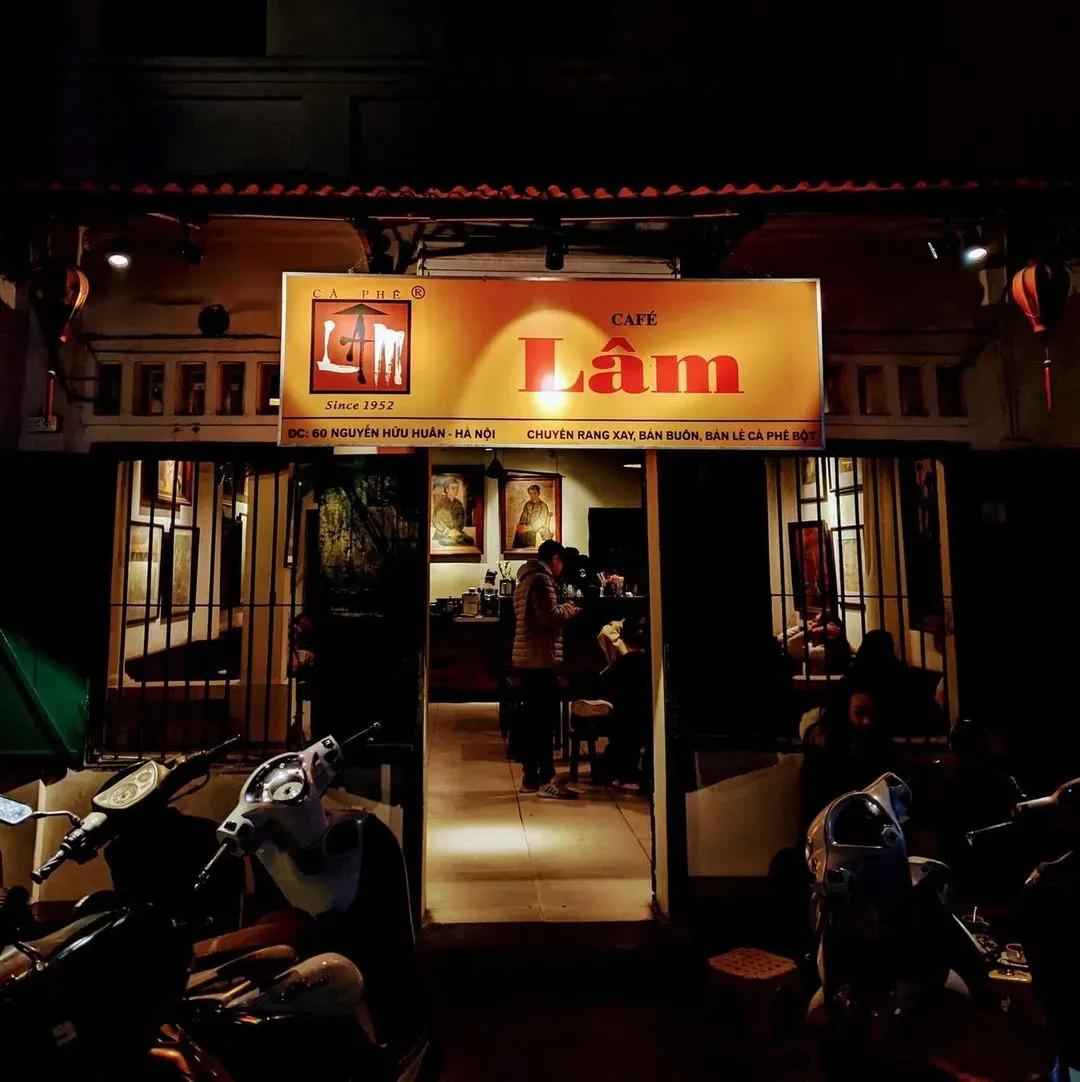
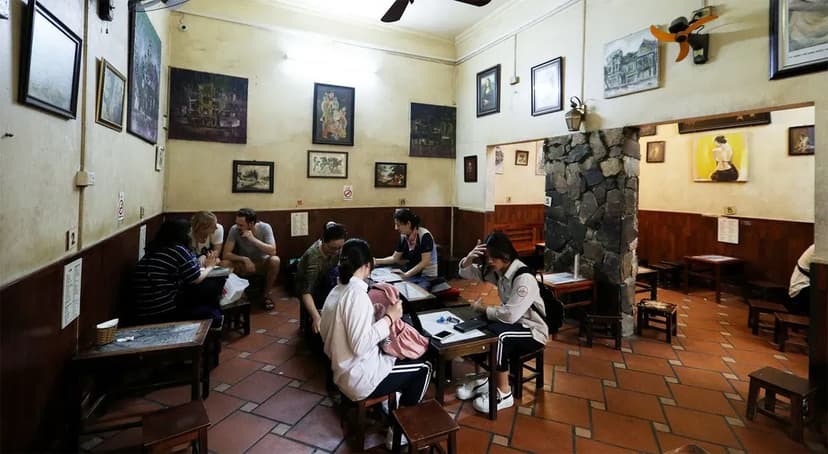
8. Hanoi Coffee - A journey back in time
Vietnam, the world’s second largest coffee exporter, is proud of its unique egg coffee, a symbol of Hanoi cuisine. Old cafes such as Nang, Nhan, Lam, Tho, Giang, Dinh, Thai, Nhi, Mai, and Hanh not only preserve the flavor of Vietnamese coffee but also bring a space imbued with the essence of old Hanoi in the heart of modern streets.
Nang Coffee Shop
Quan Nang is an ideal place to start a new day with a hot cup of coffee and a new newspaper. The shop has been passed down to the third generation but still maintains a pleasant and comfortable atmosphere for customers. You can enjoy strong coffee at 6 Hang Bac and enjoy the close feeling of the customers at the shop, it seems that all the customers are relatives.
Nhan Coffee Shop
Founded in 1946, Nhan Coffee was originally a meeting place for soldiers to exchange information. The name "Nhan" was chosen by the three co-founders with many meanings such as humanity, kindness, and virtue. Mr. Thi and his wife researched the formula of combining tea coffee and Robusta coffee. Today, Nhan Coffee has become a famous brand, with the shop on Hang Hanh being the most well-known address, where the aroma of coffee lingers throughout the street.
Lam Coffee Shop
Lam Coffee, named after Mr. Lam, who founded the shop in 1952, is famous for its unique flavor thanks to the lack of additives. The coffee here is roasted and ground completely naturally, giving it a different flavor than other places. The shop currently has two locations on Nguyen Huu Huan Street, run by Mr. Lam's two children.
Tho Coffee Shop
Located on Trieu Viet Vuong Street, Tho Cafe stands out for its delicious coffee, affordable prices and rustic atmosphere. Built by five brothers in a Hanoi family, the shop has become a familiar destination for coffee lovers. A cup of rich milk coffee or delicious purple sticky rice yogurt is a popular choice among customers.
Giang Coffee Shop
Giang Coffee, opened by Mr. Nguyen Van Giang in 1946, is famous for its unique egg coffee. Created from beaten egg yolks and sugar, egg coffee brings a rich, creamy layer, becoming a specialty not to be missed. Currently, Giang has two locations in Nguyen Huu Huan and Yen Phu, where many tourists come to enjoy the standard flavor of egg coffee.
Dinh Coffee Shop
Dinh Coffee Shop, located on Dinh Tien Hoang Street, is famous for its small space and view of Hoan Kiem Lake. Despite its modest size, the shop is always crowded, thanks to the flavor of egg coffee that has been kept almost intact over many years.
Thai Coffee Shop
Quan Thai, located near Quan Tho on Trieu Viet Vuong Street, brings the atmosphere of old Hanoi with its time-stained walls and simple chairs. The coffee here is very reasonably priced, from 15,000 - 30,000 VND for a drink, attracting a large number of customers.
Nhi Coffee Shop
Quan Nhi, located on Hang Ca Street, is one of Hanoi's old coffee shops, always crowded despite its small space. Diners will not be able to ignore the owner's unique way of making coffee, from measuring the coffee to creating creamy foam on the surface of the cup.
Mai Coffee Shop
Previously, Mai Coffee Shop only specialized in selling coffee beans and packaged roasted coffee. Now, with many locations, the shop serves premium coffee from varieties such as Arabica, Moca, Paris, attracting a large number of customers.
Hanh Coffee Shop
Hanh Coffee contributes to making the sidewalk of Nguyen Huu Huan street more bustling with a stable number of customers. The space is noisy but full of life, where people come not only to enjoy coffee but also to feel the rhythm of Hanoi life.
Drifting Across Vietnam's River Region
By Duc Anh
07/10/2024
Discover the mystical beauty of Vietnam's rivers, from the Da River Lake to Cai Rang floating market, where nature and culture blend together.
The Most Pristine Islands in Vietnam
By Duc Anh
27/10/2024
Discover the unspoiled beauty of Vietnam's little-known islands, where nature and culture blend together
8 Vietnamese Delicacies Honored in International Media
By Duc Anh
30/10/2024
Discover 8 signature Vietnamese dishes honored by international media, from pho to egg coffee, offering a unique culinary experience
Discover 2 Delicious, Popular Dishes Associated With Saigon People
By Duc Anh
31/10/2024
Discover the unique flavors of Hu Tieu and Com Tam, two popular yet delicious dishes of Saigon.





